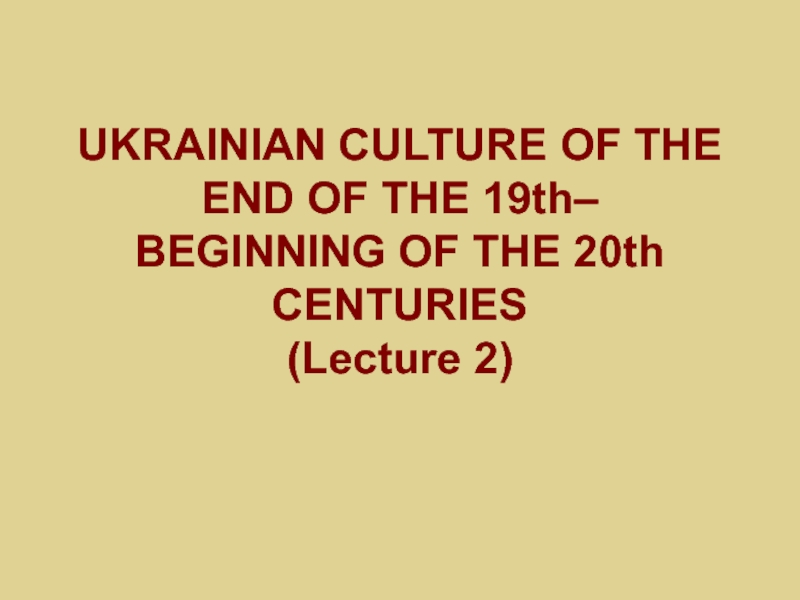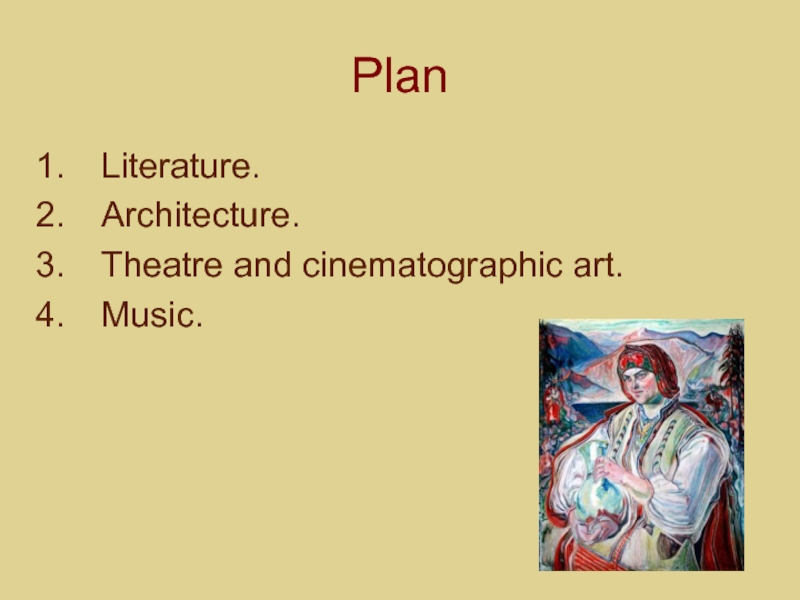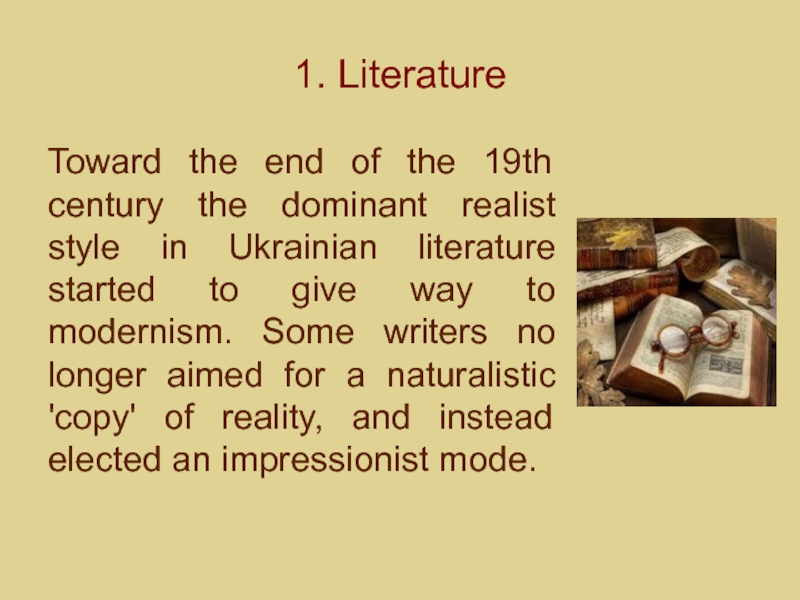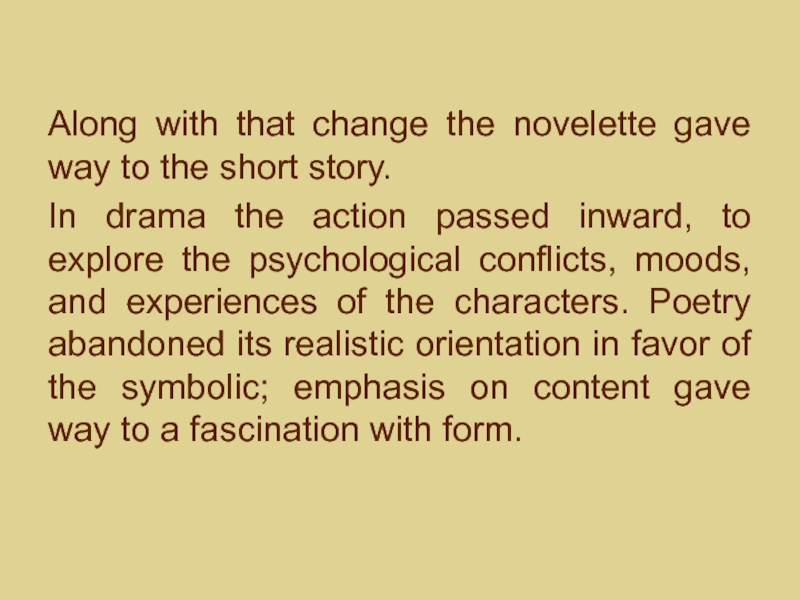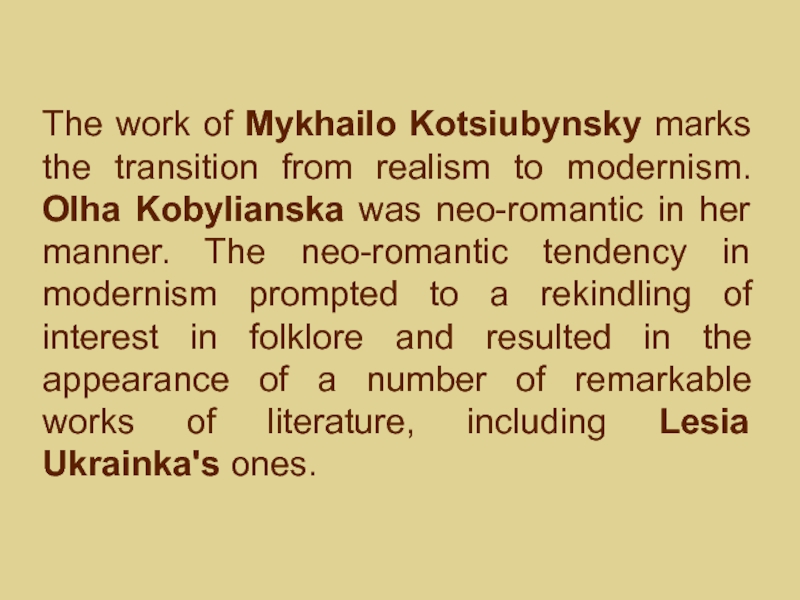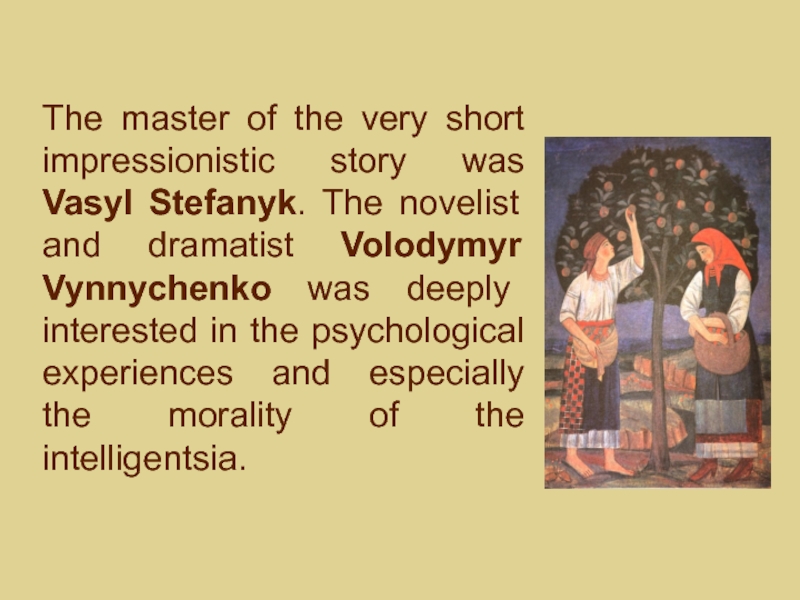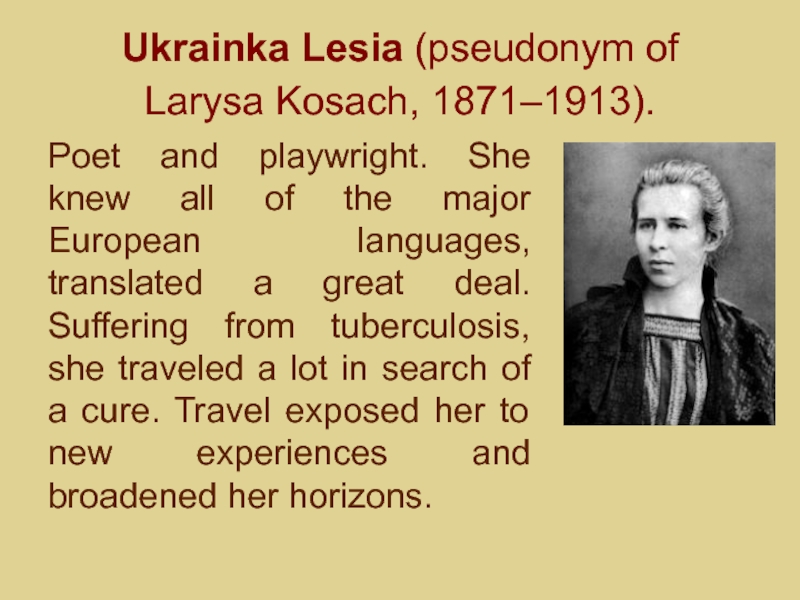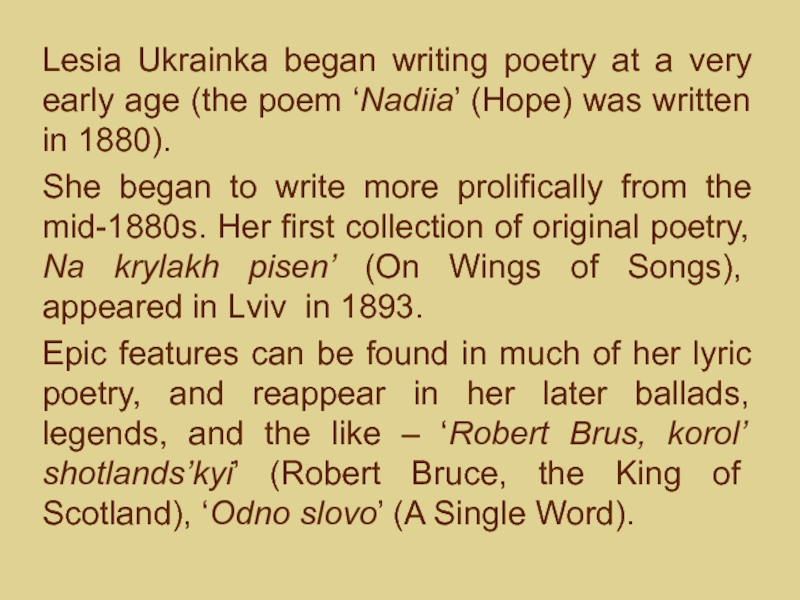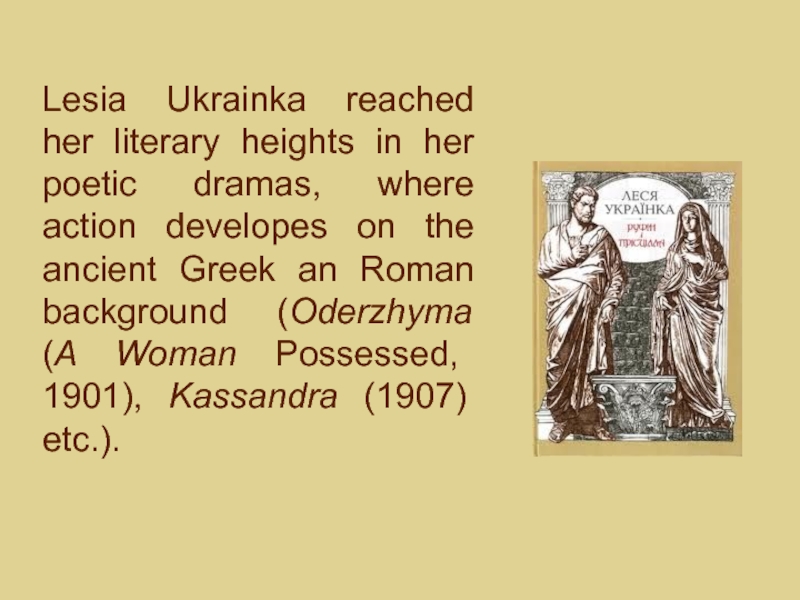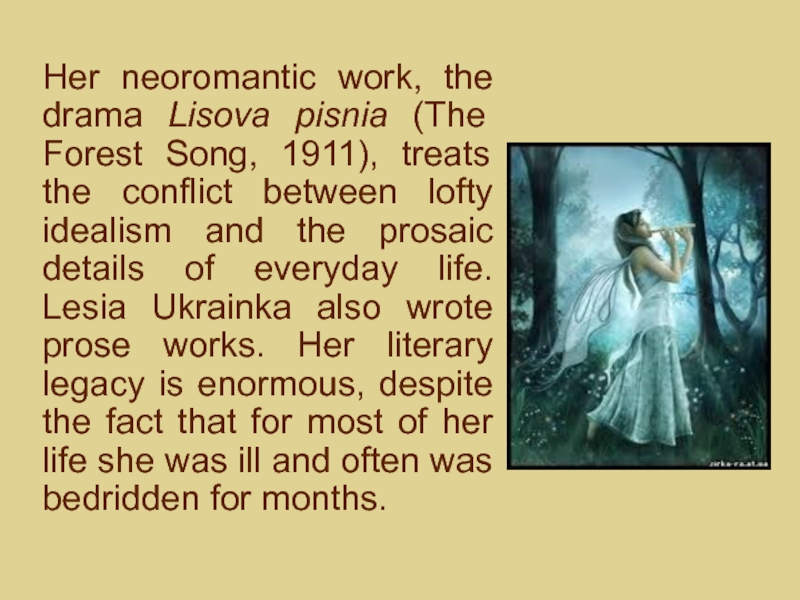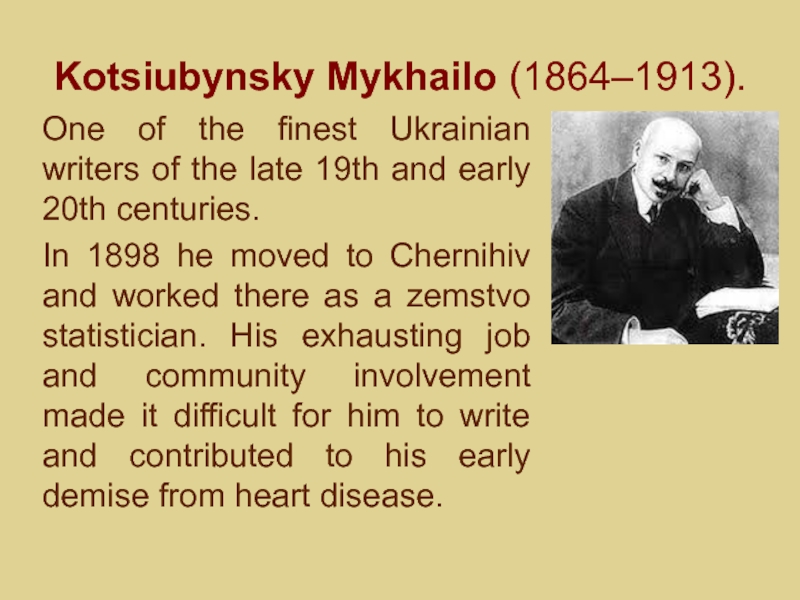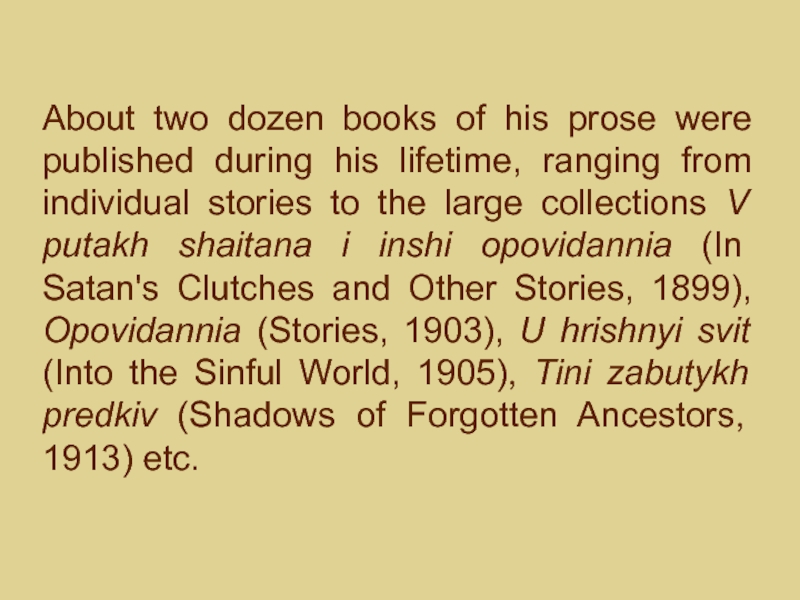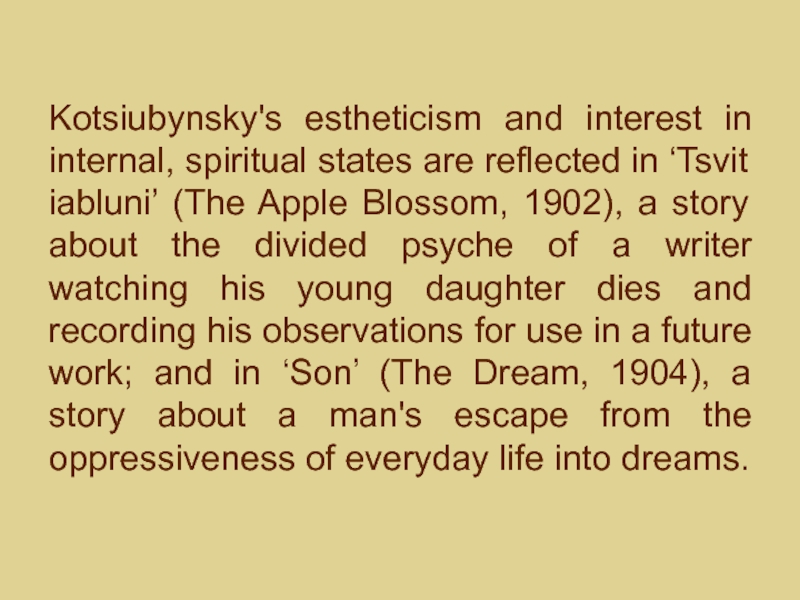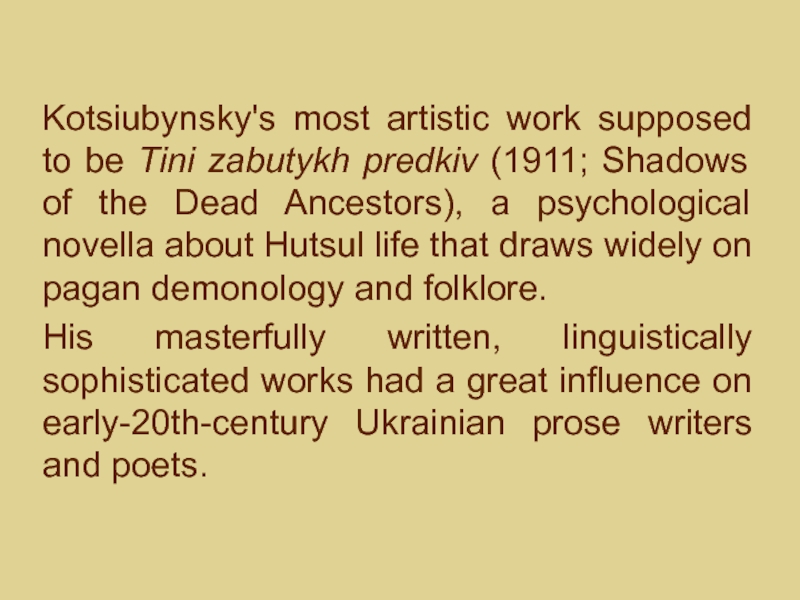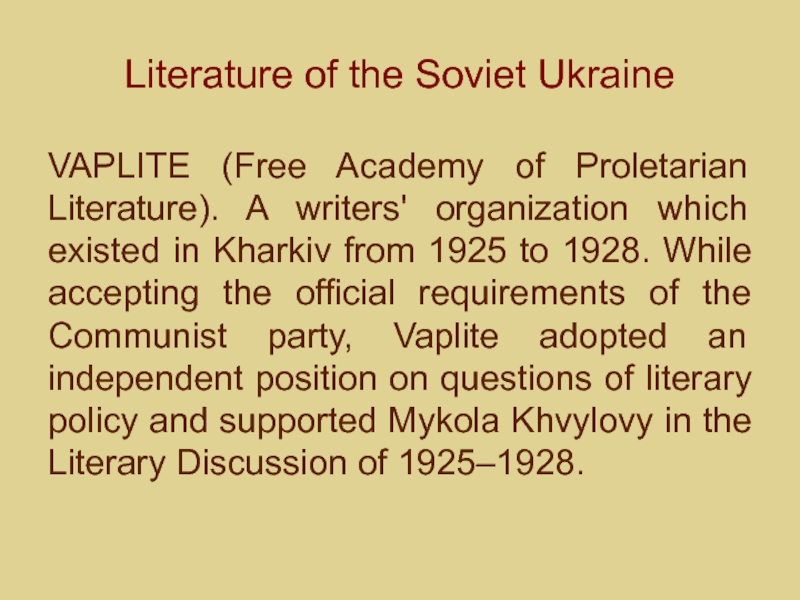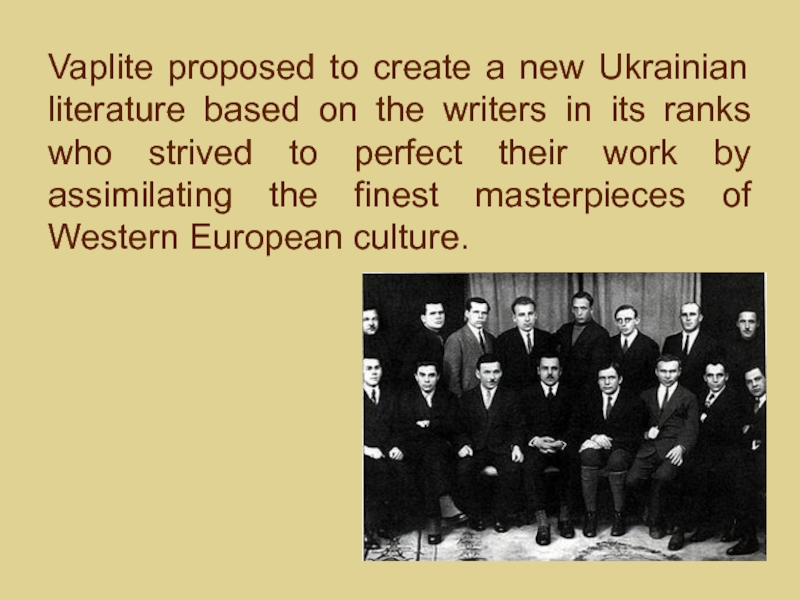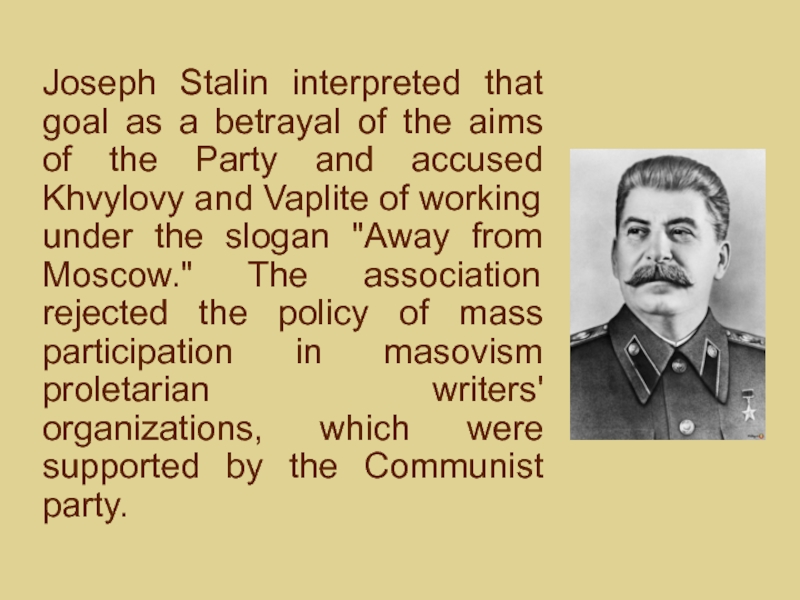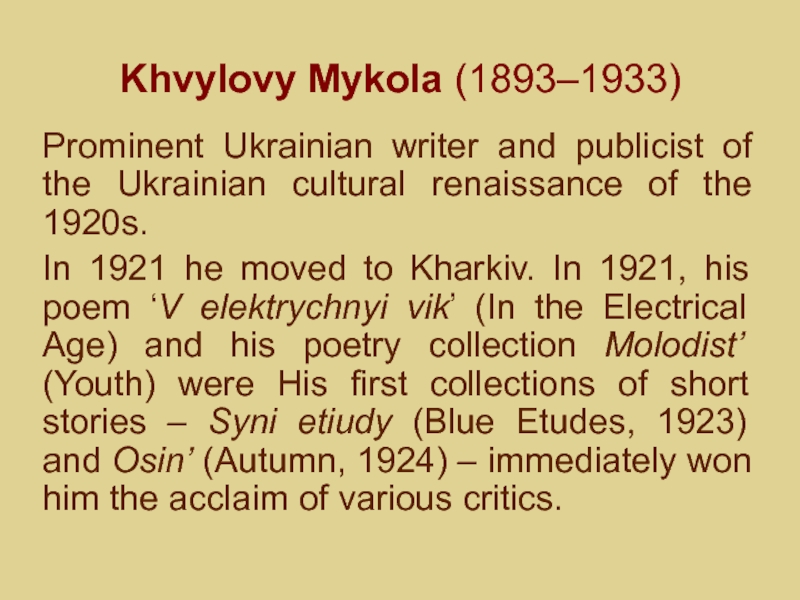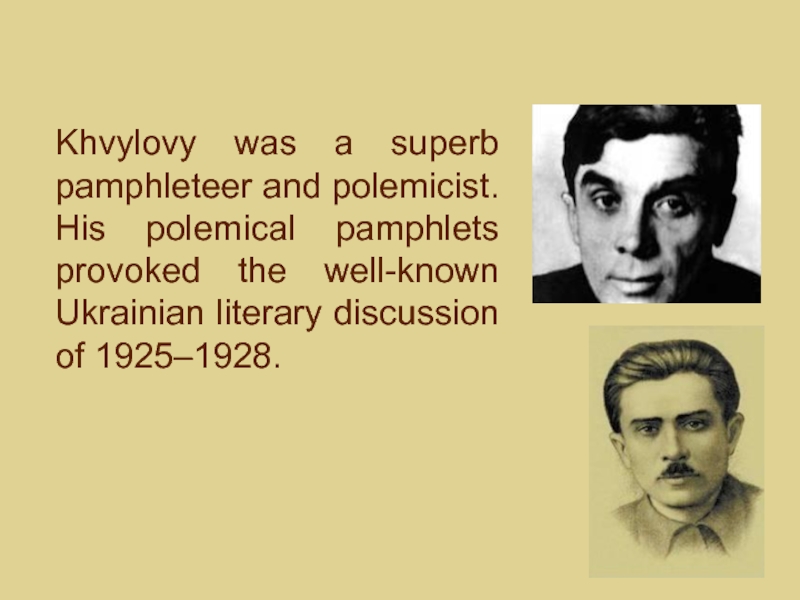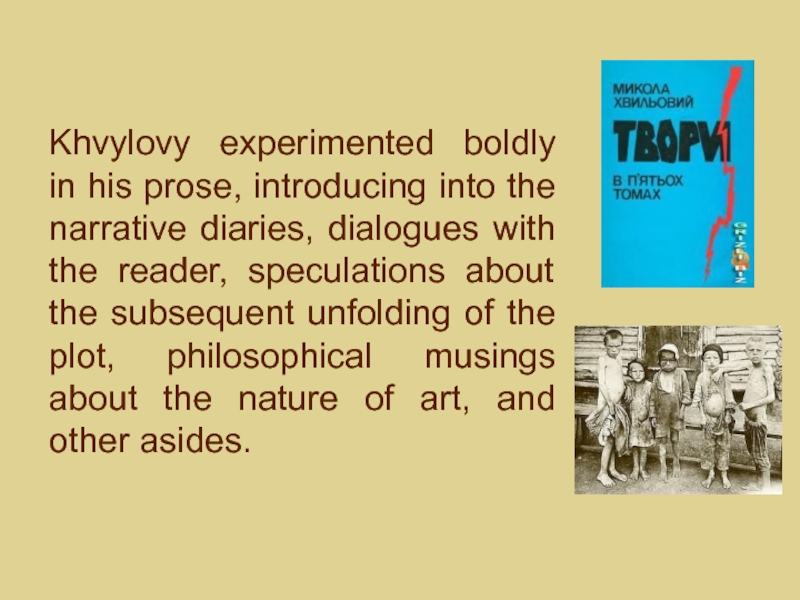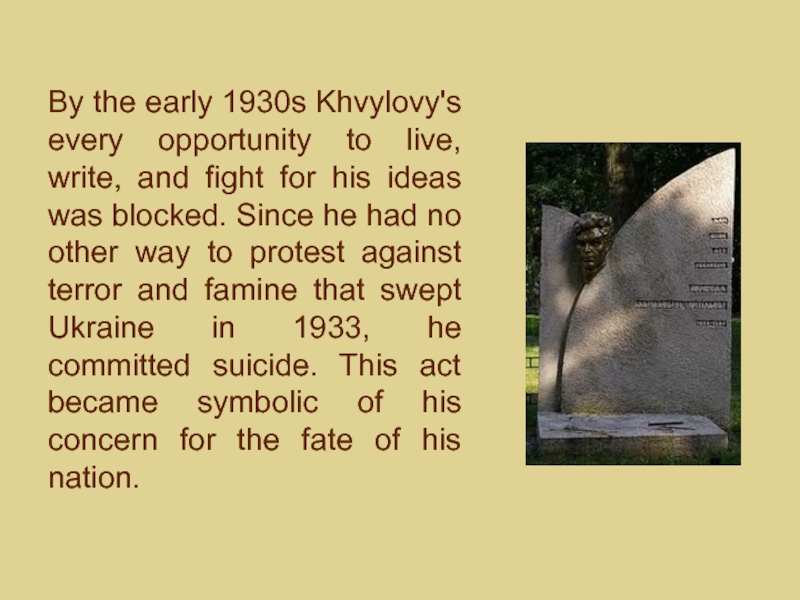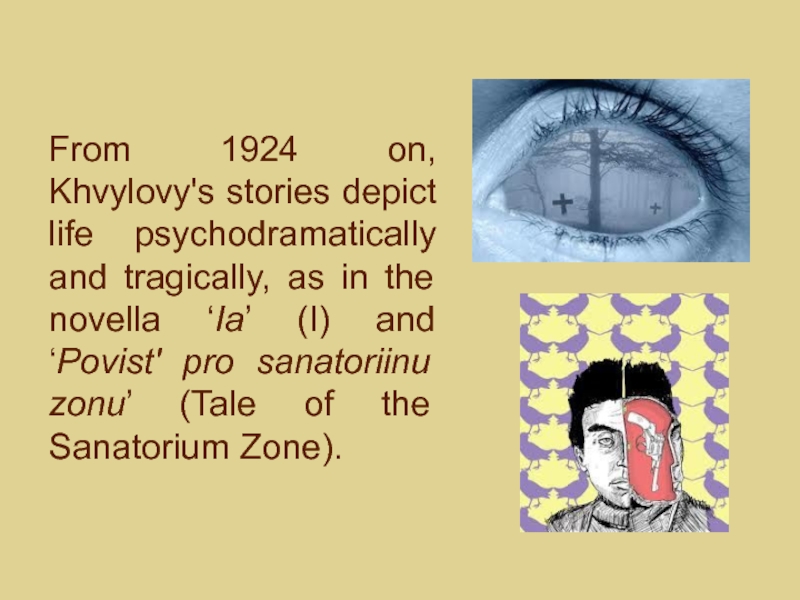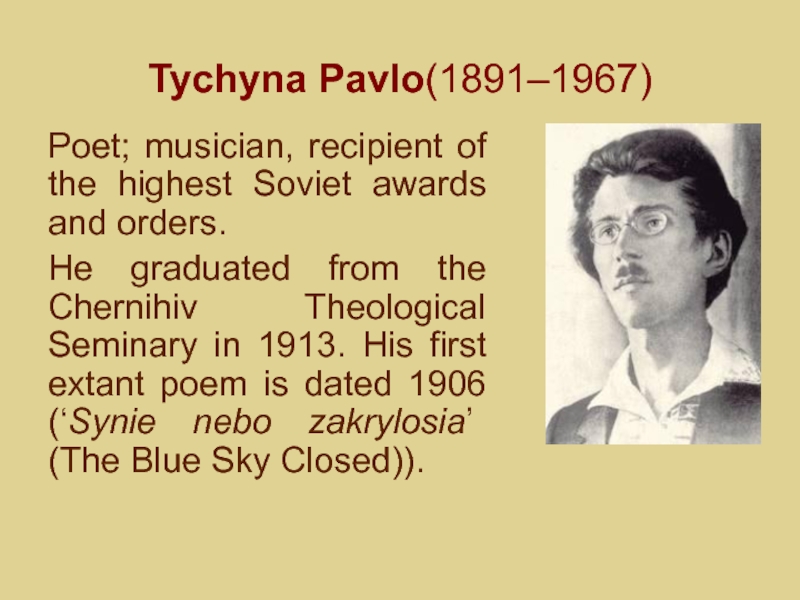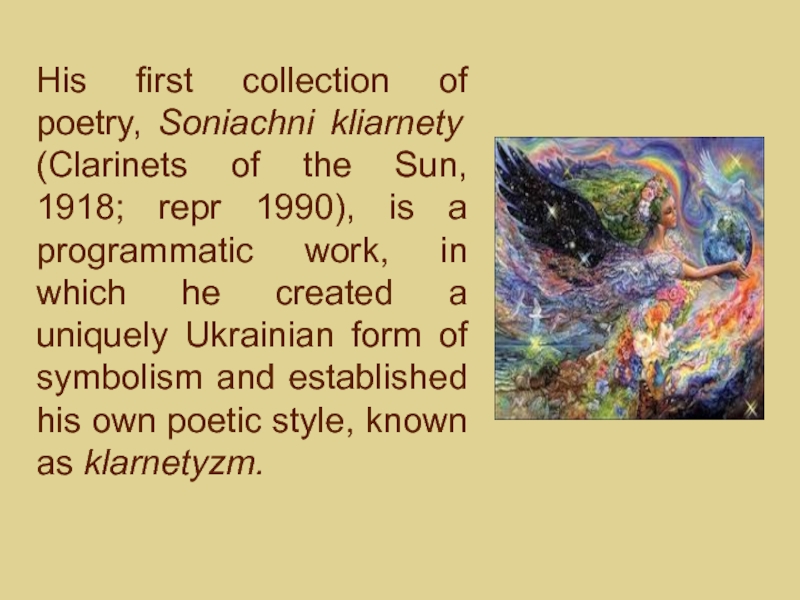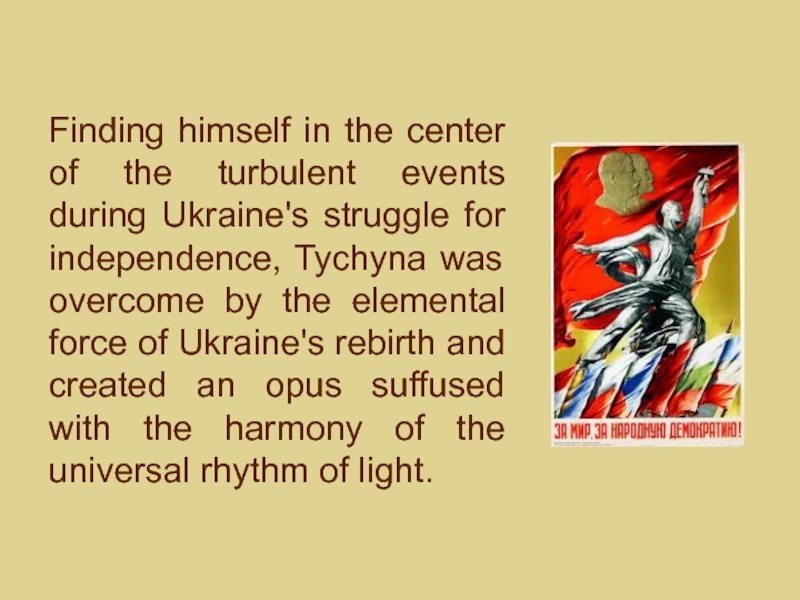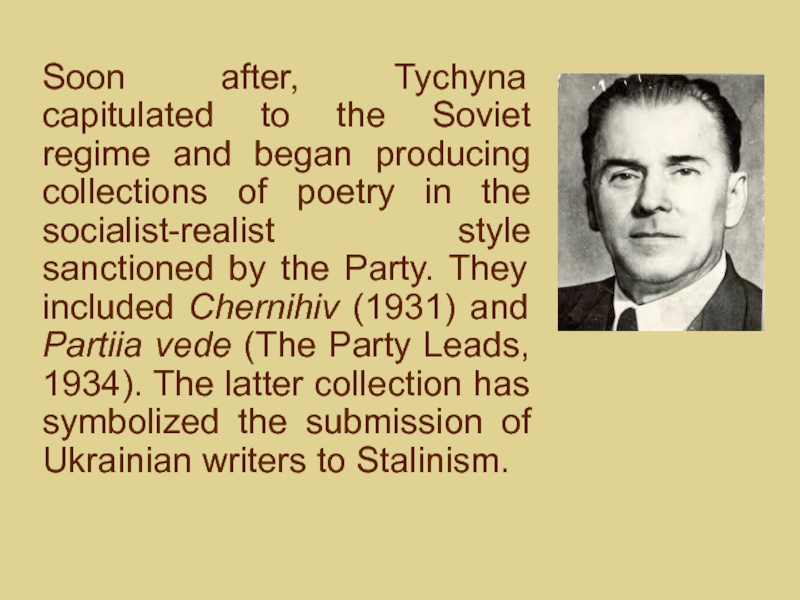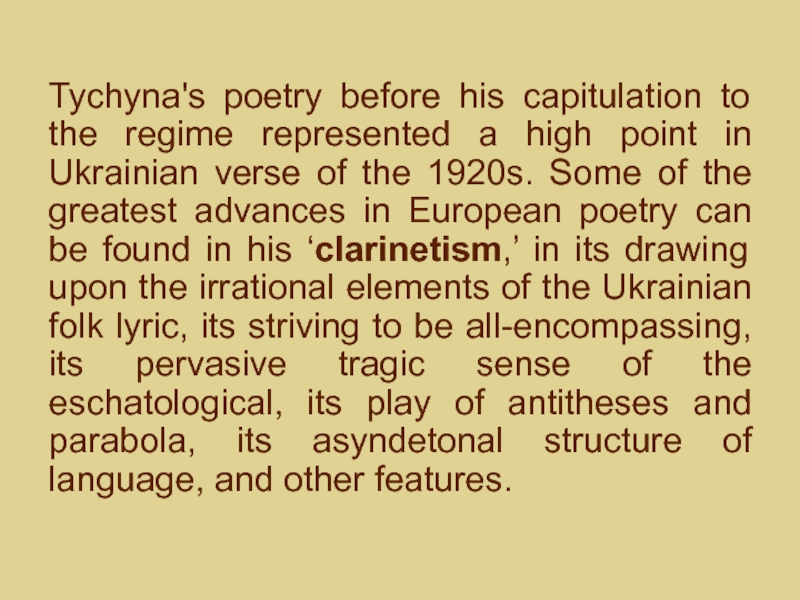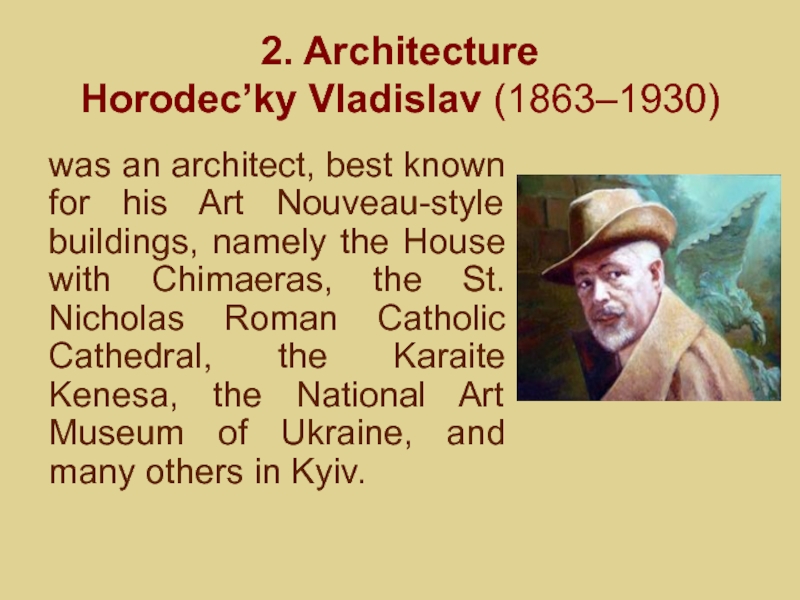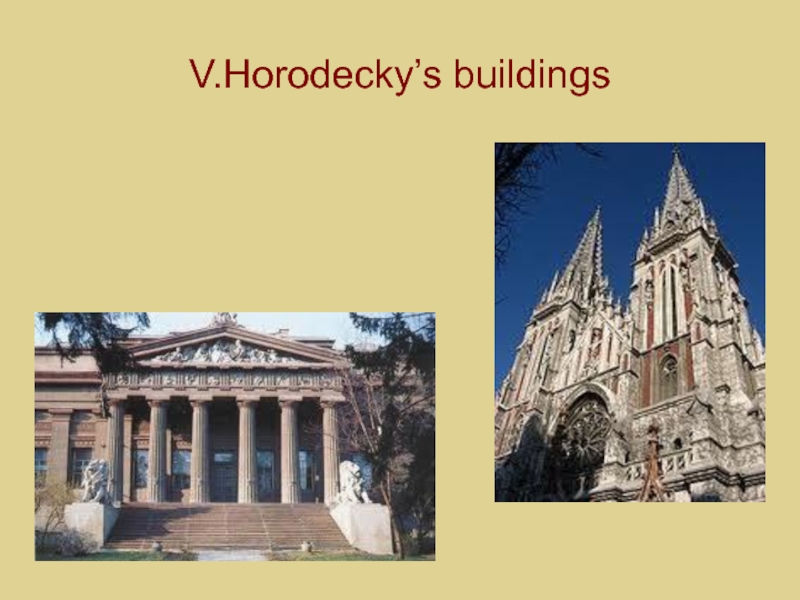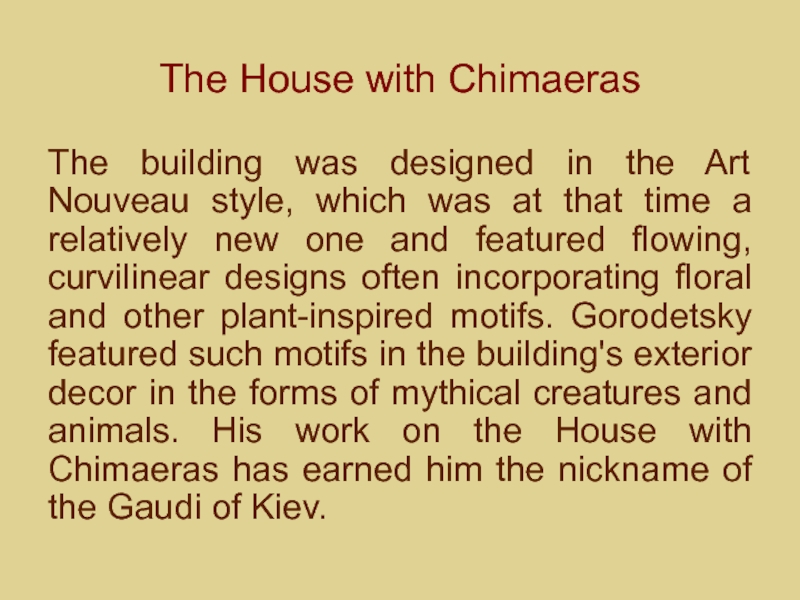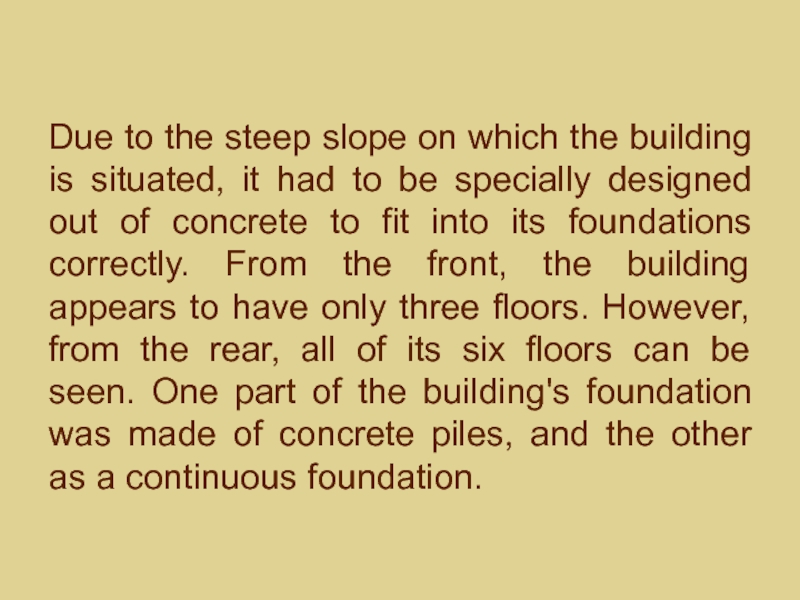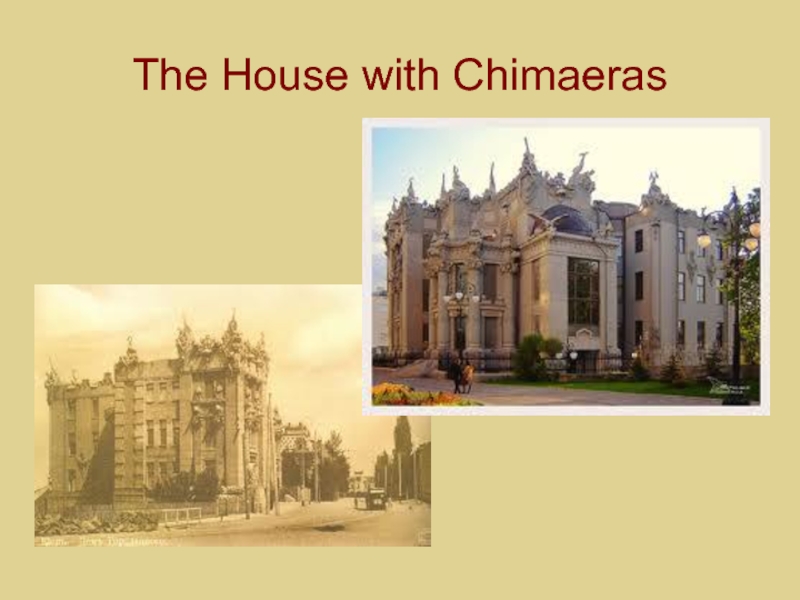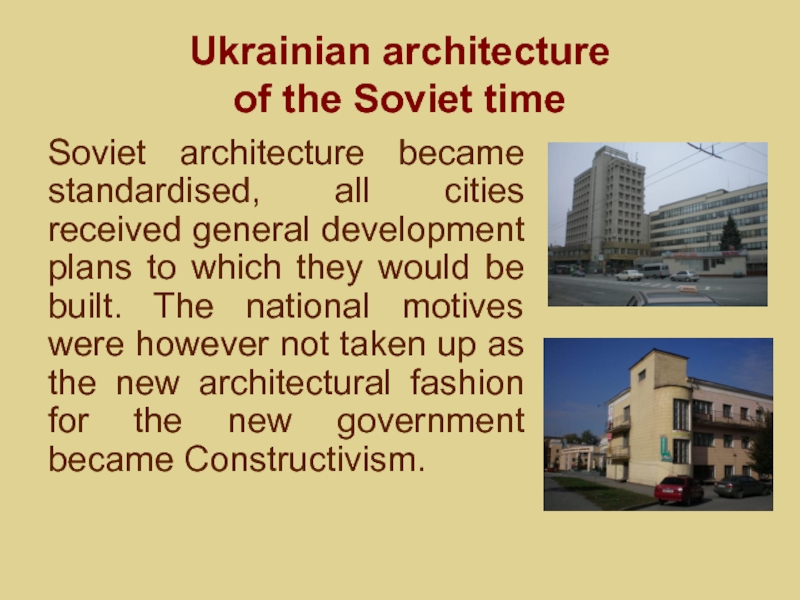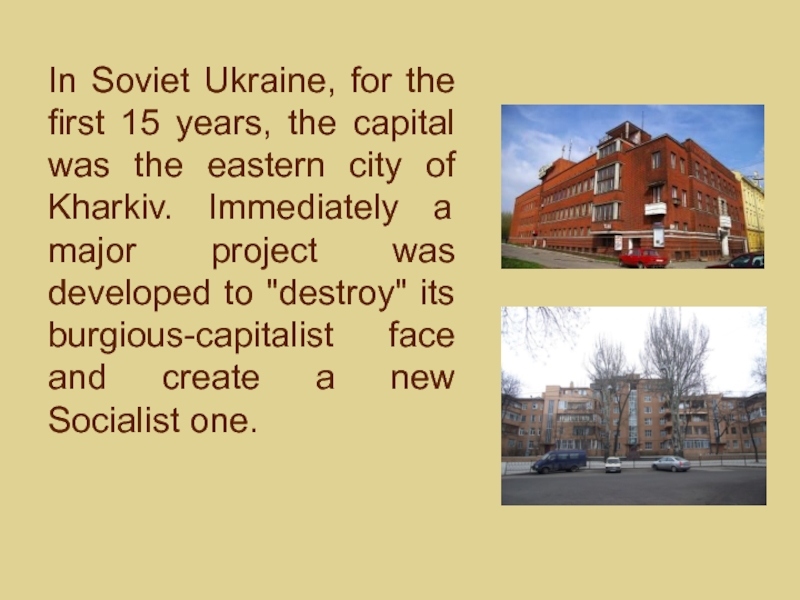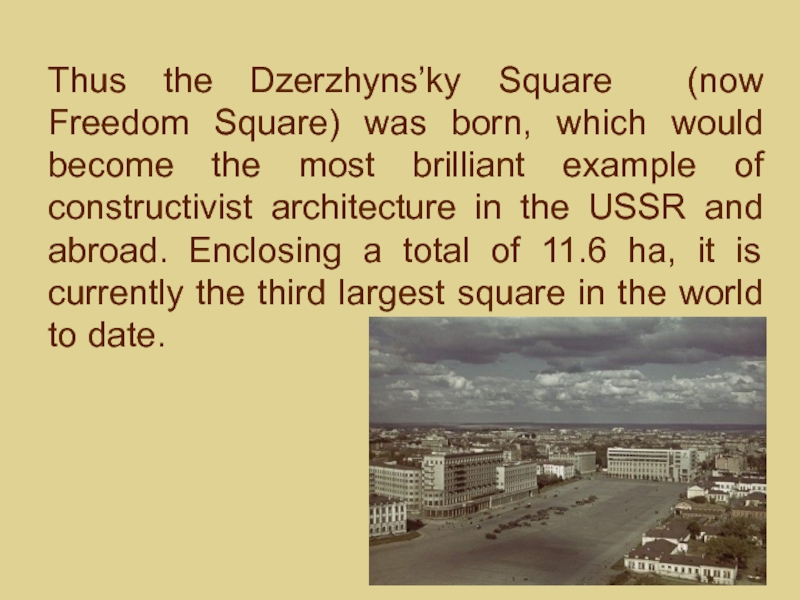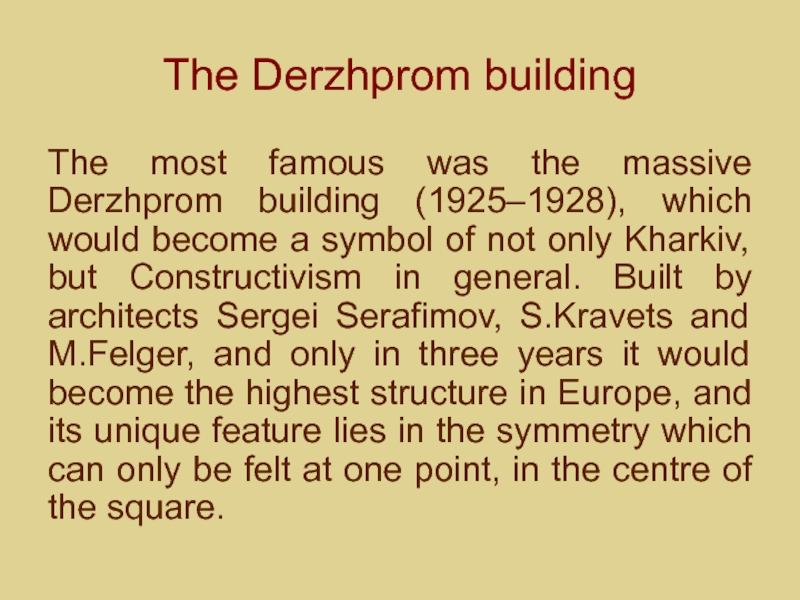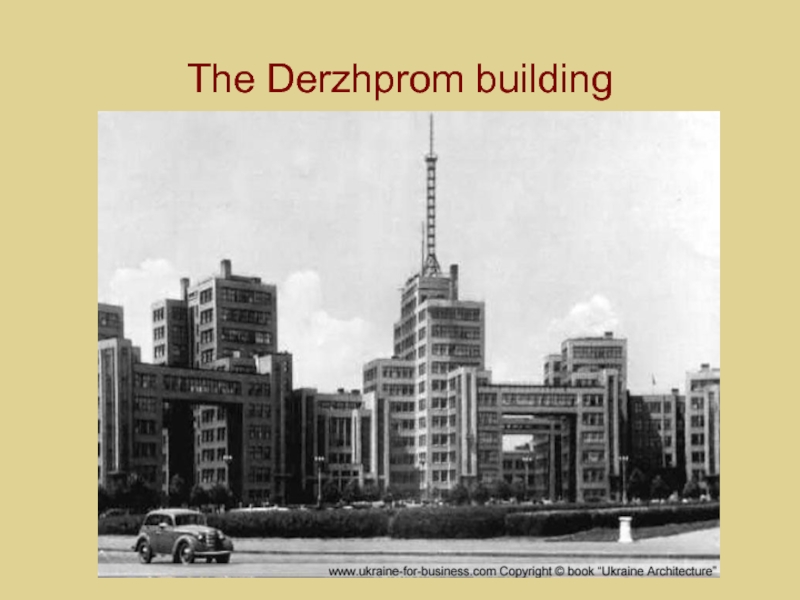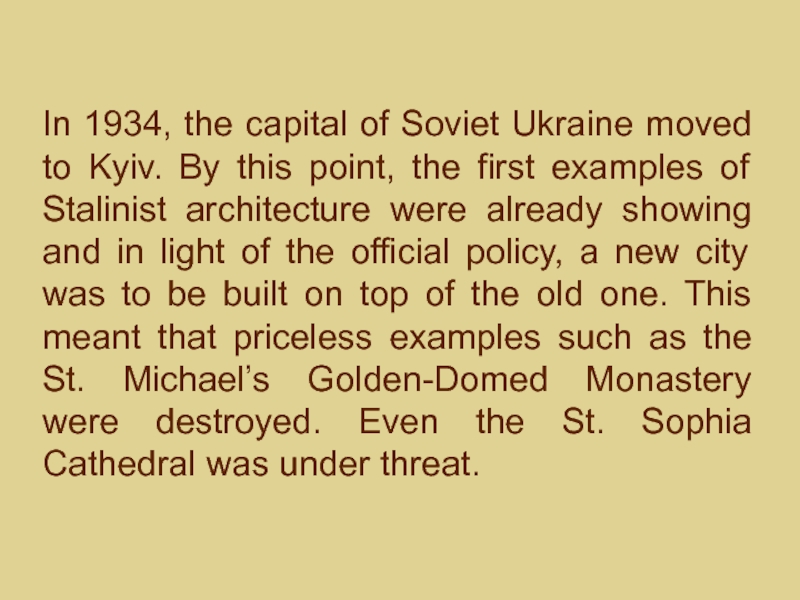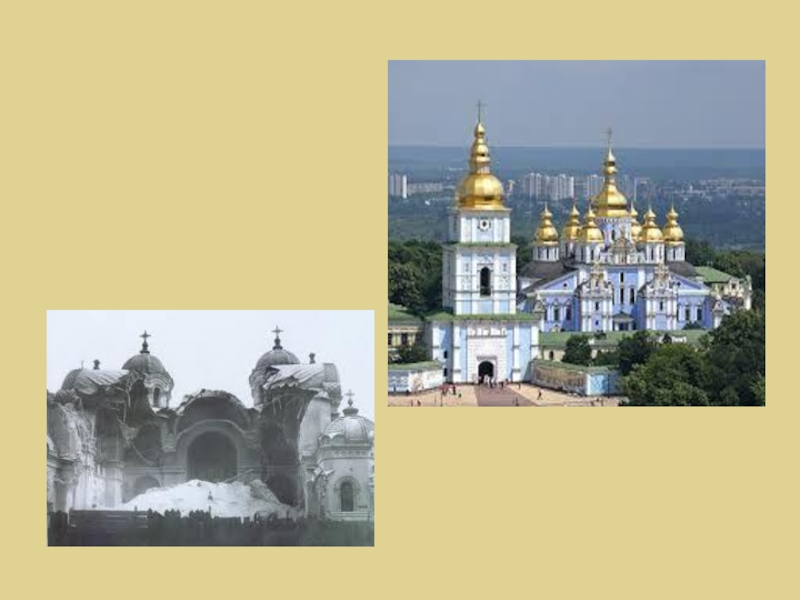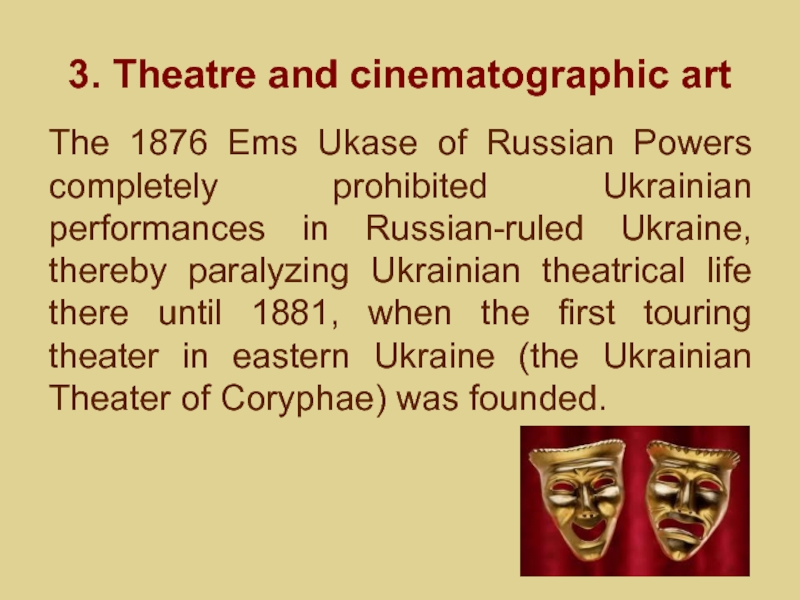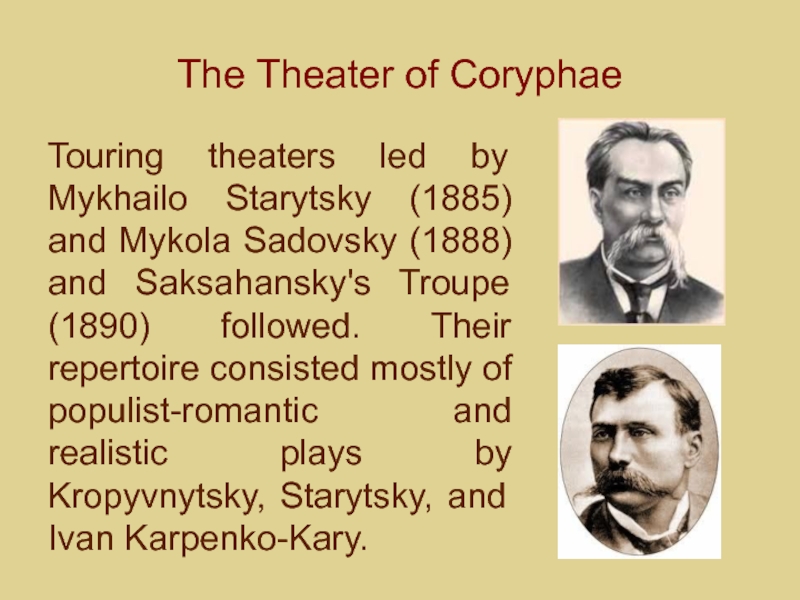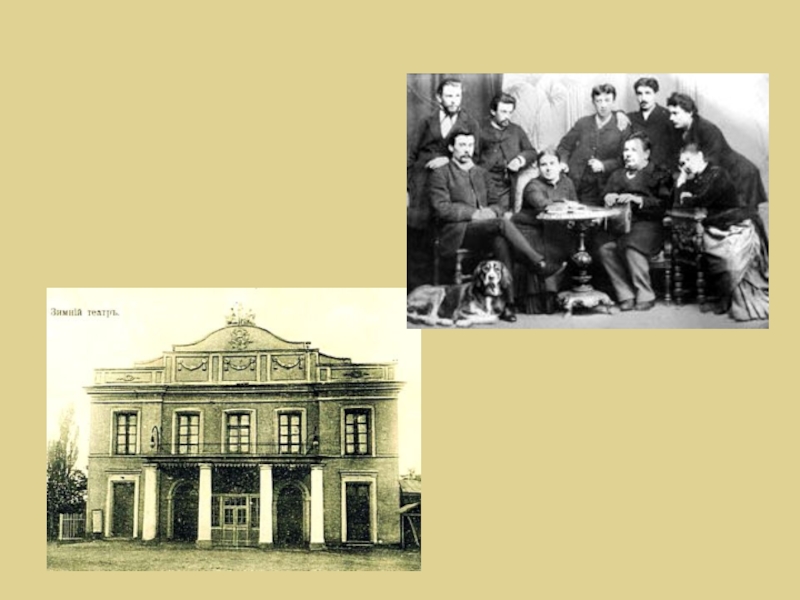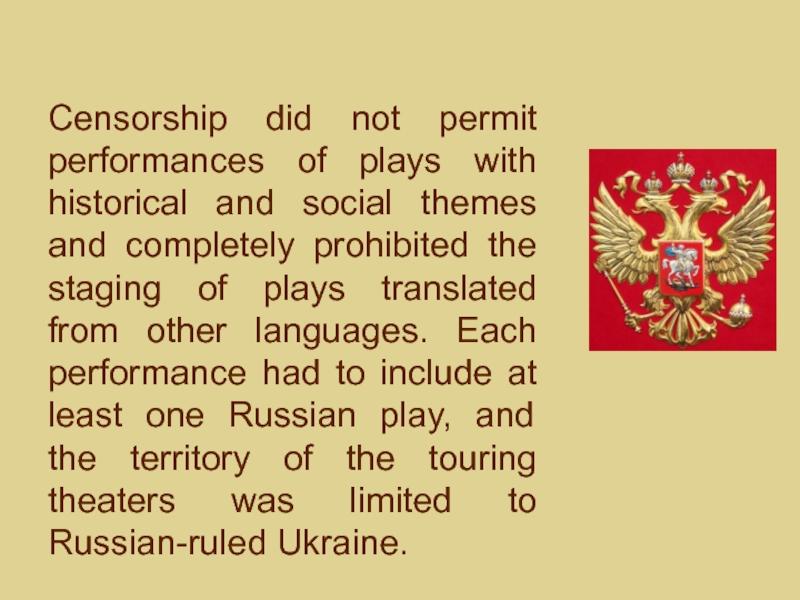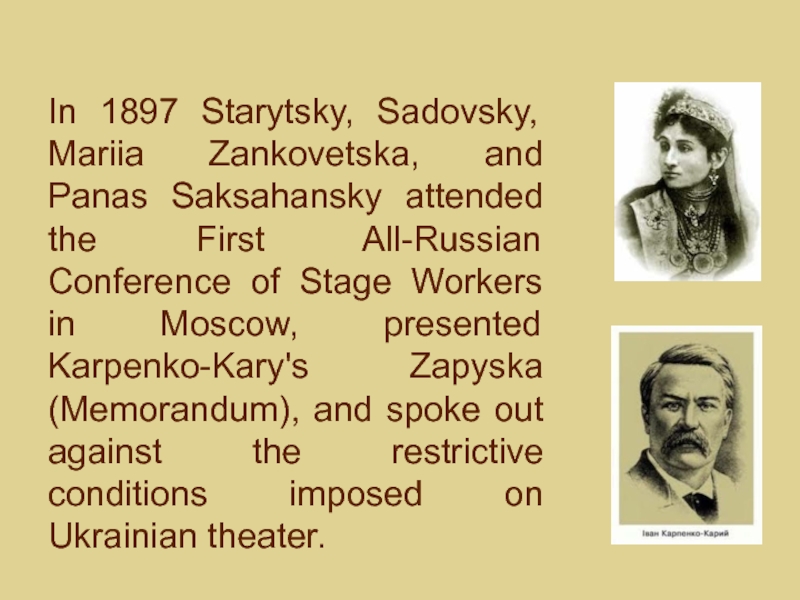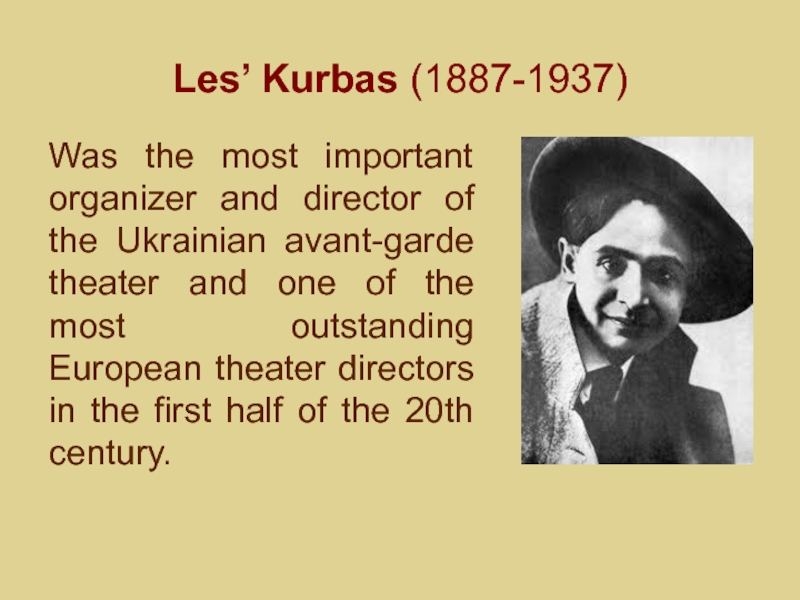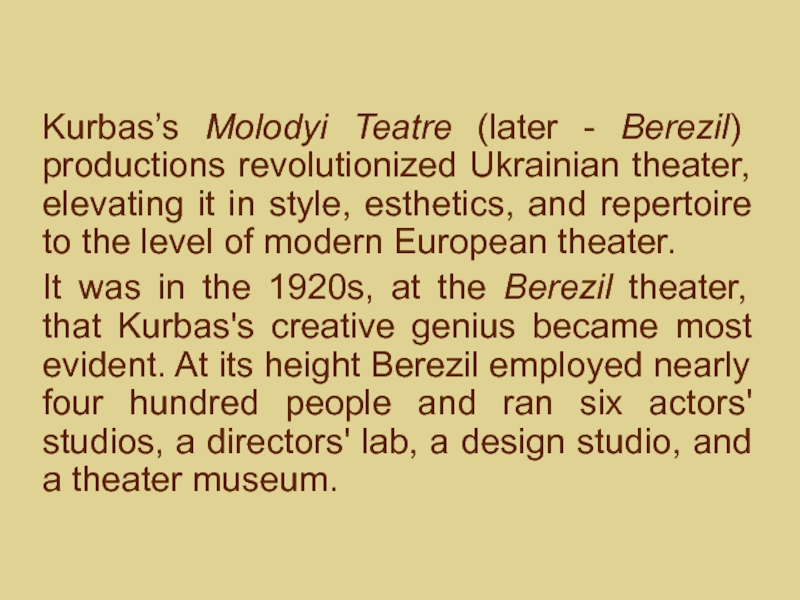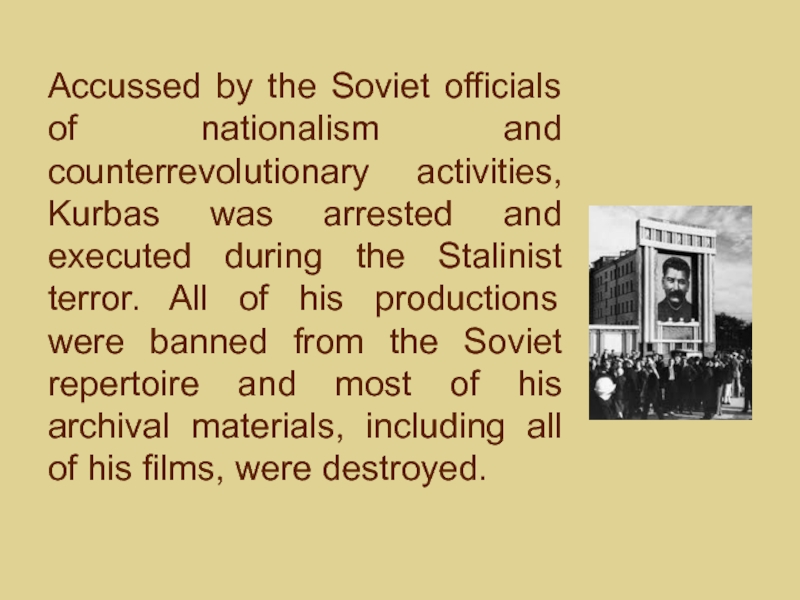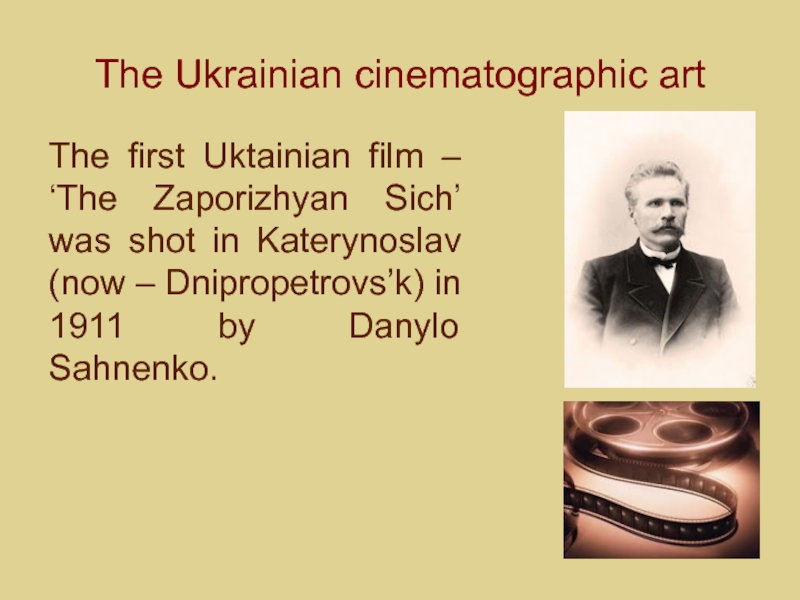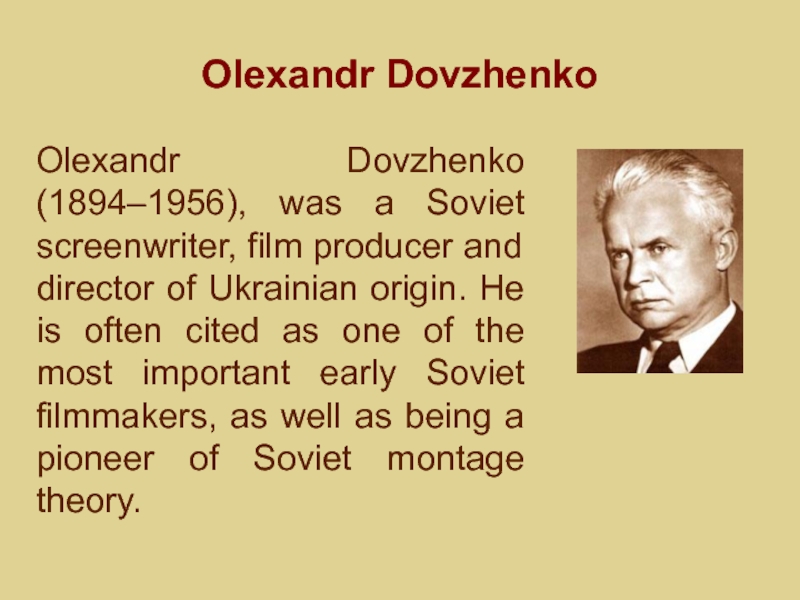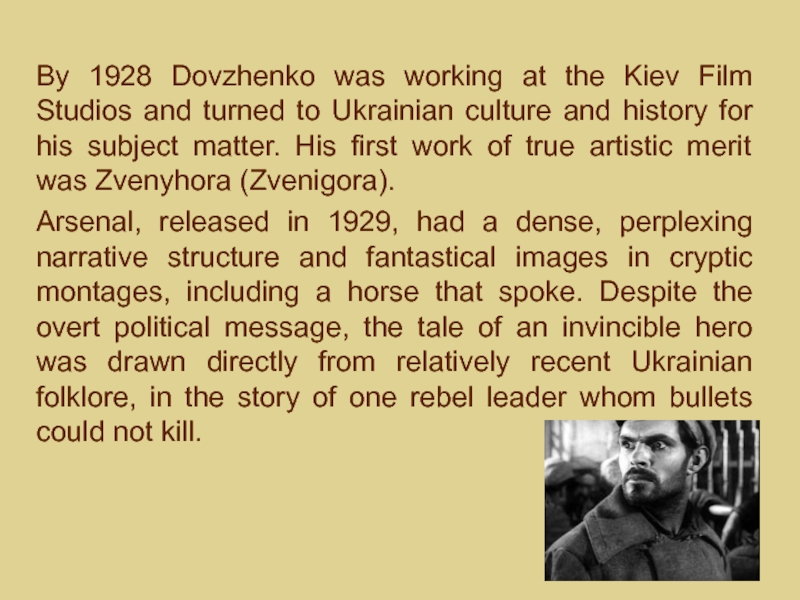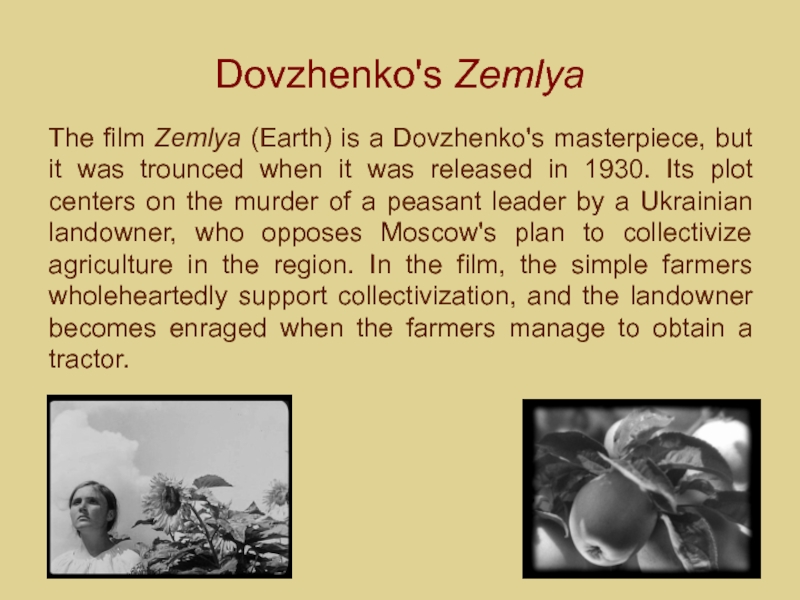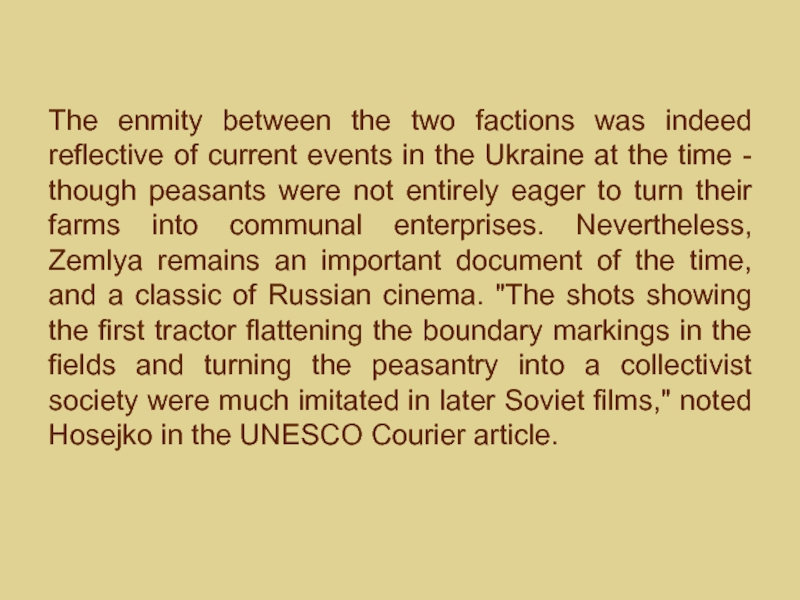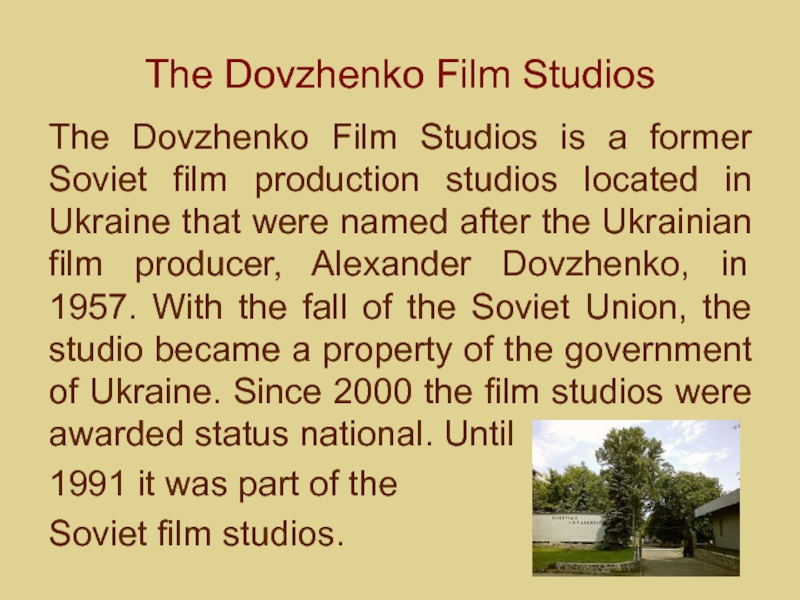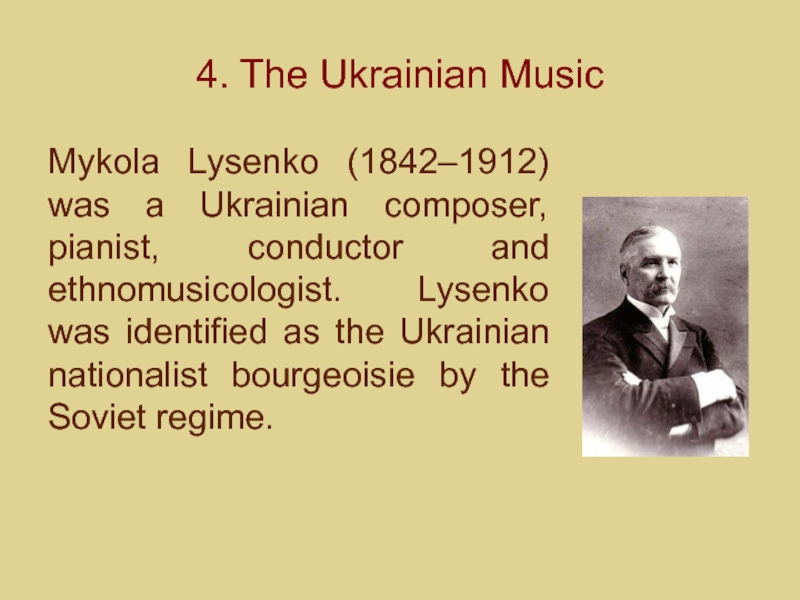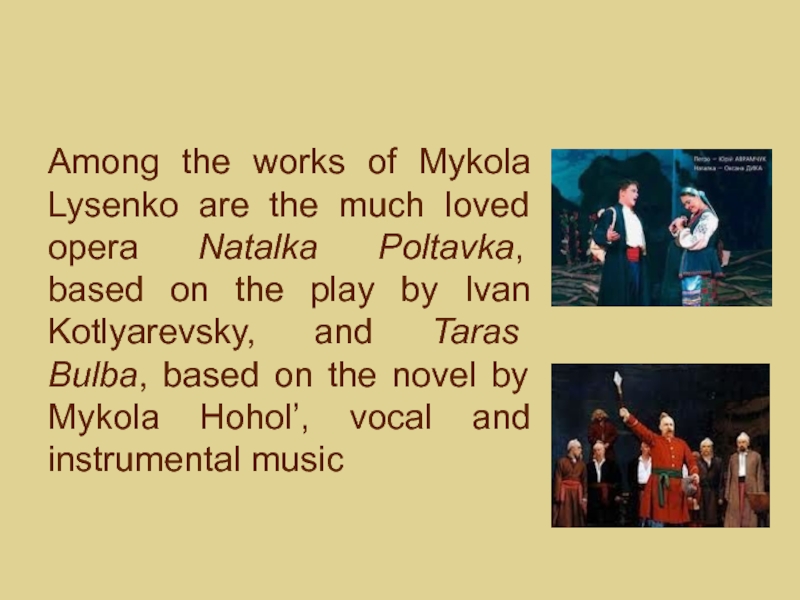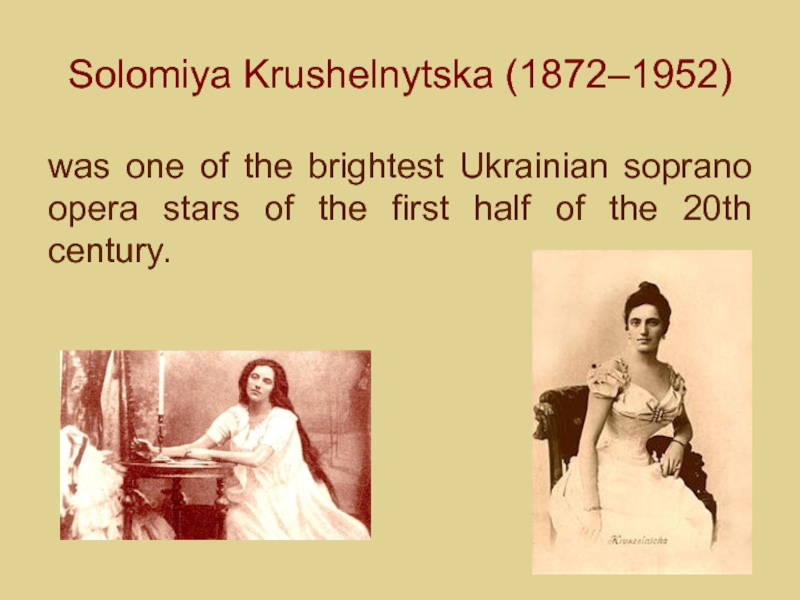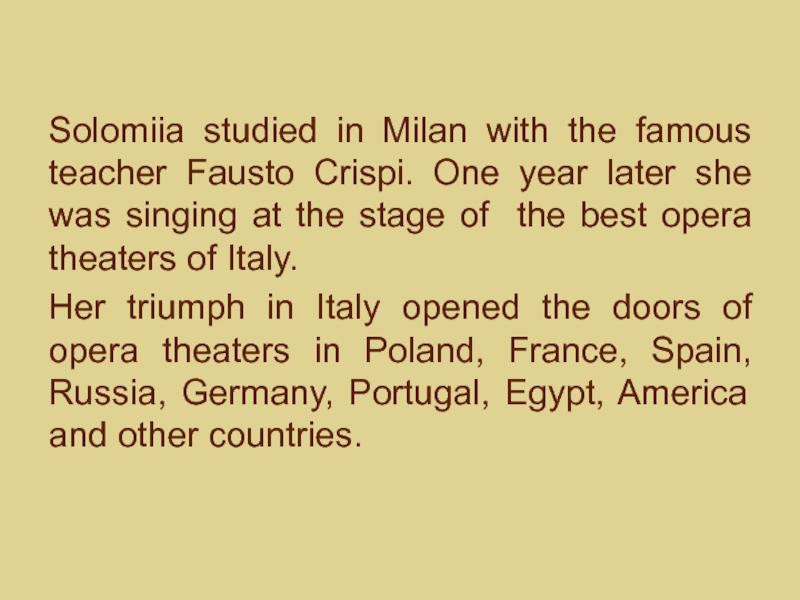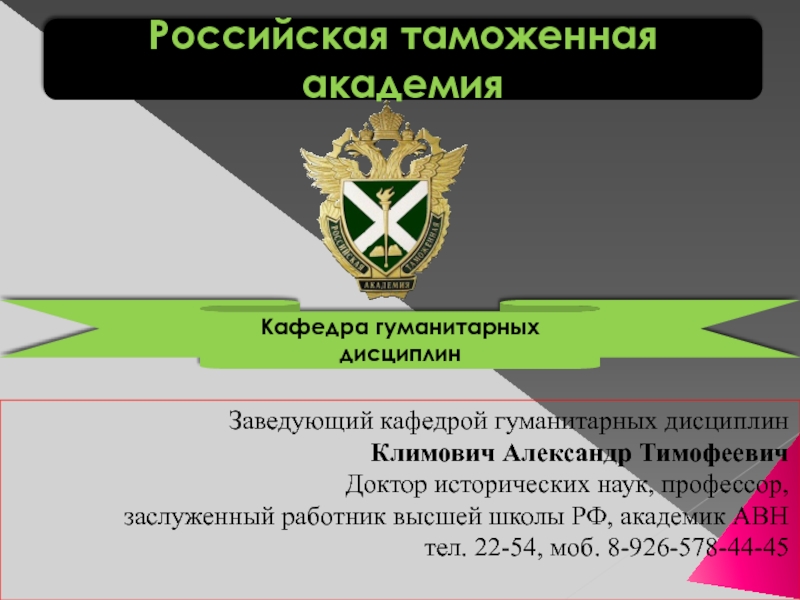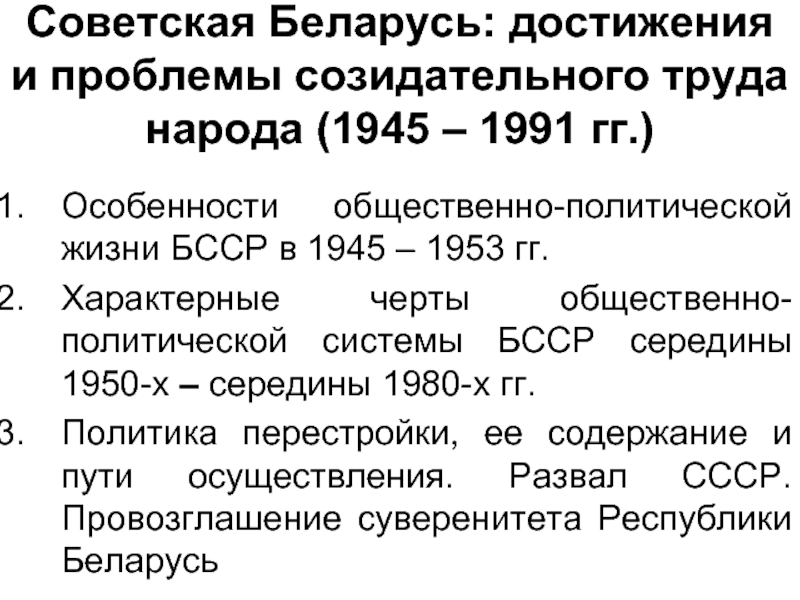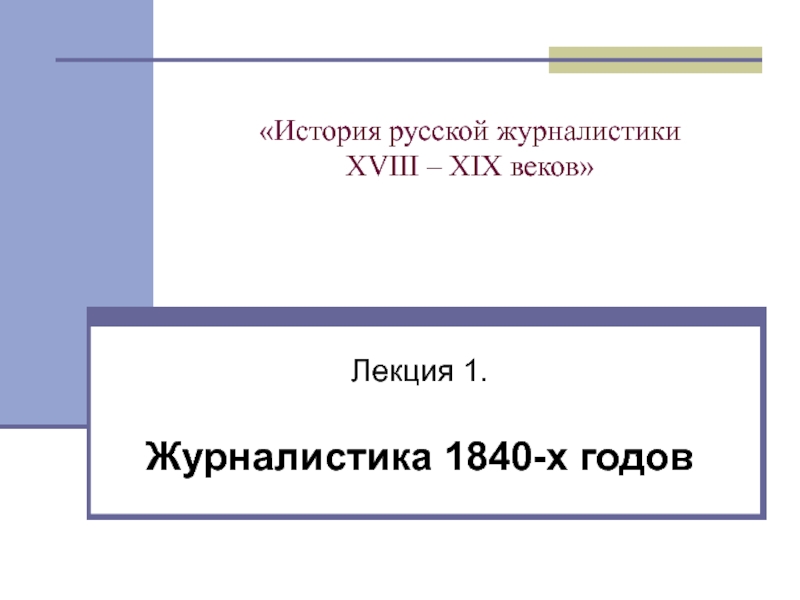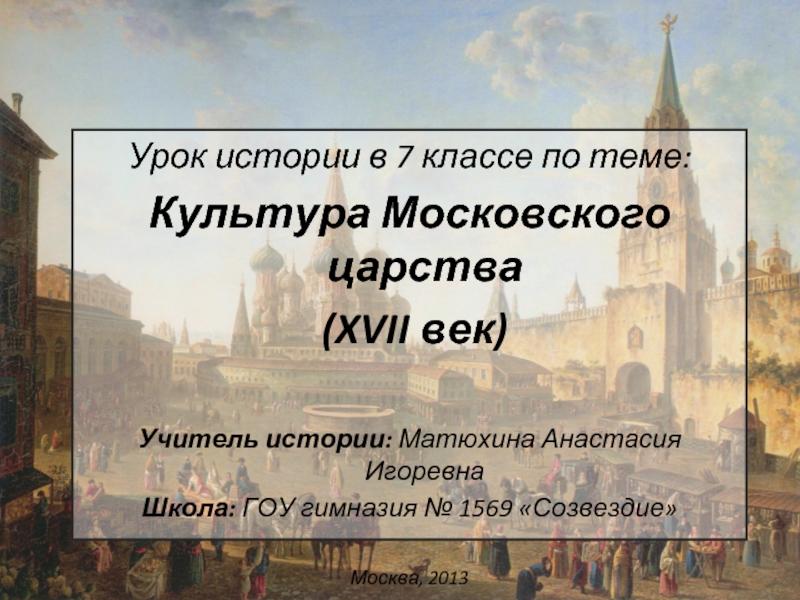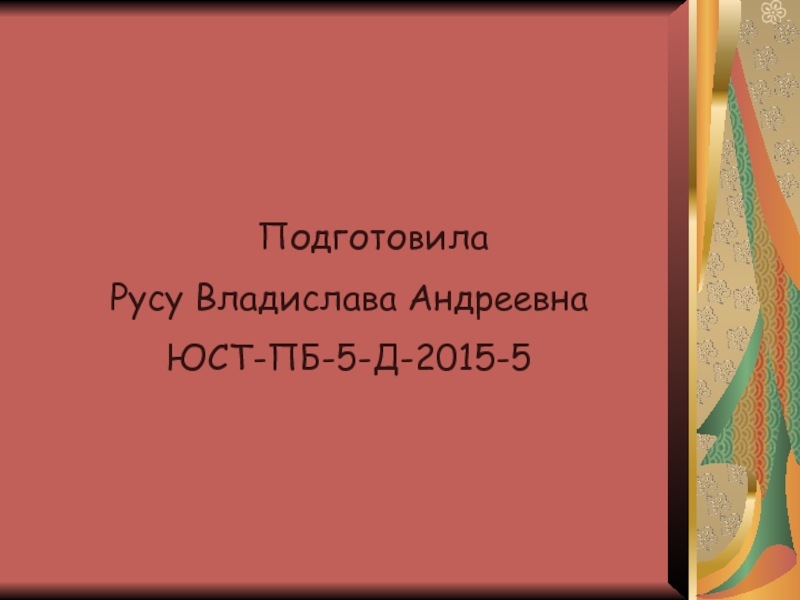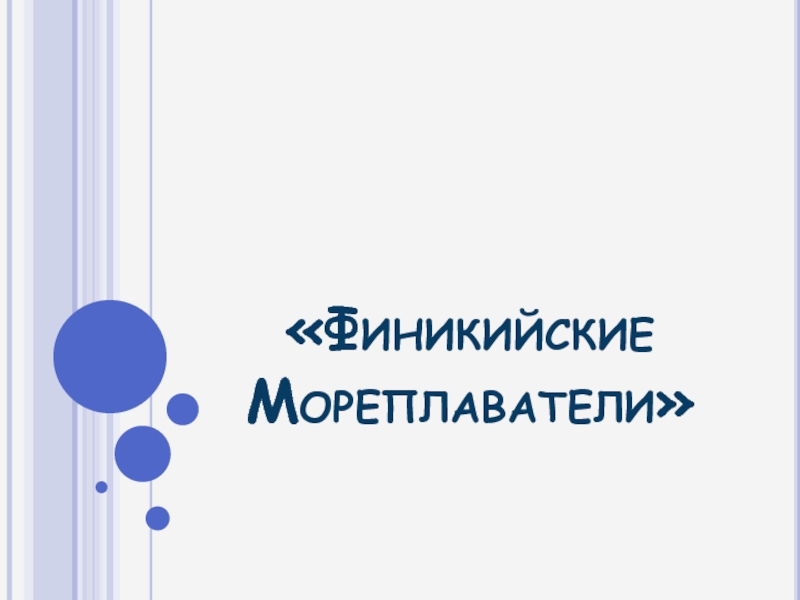- Главная
- Разное
- Дизайн
- Бизнес и предпринимательство
- Аналитика
- Образование
- Развлечения
- Красота и здоровье
- Финансы
- Государство
- Путешествия
- Спорт
- Недвижимость
- Армия
- Графика
- Культурология
- Еда и кулинария
- Лингвистика
- Английский язык
- Астрономия
- Алгебра
- Биология
- География
- Детские презентации
- Информатика
- История
- Литература
- Маркетинг
- Математика
- Медицина
- Менеджмент
- Музыка
- МХК
- Немецкий язык
- ОБЖ
- Обществознание
- Окружающий мир
- Педагогика
- Русский язык
- Технология
- Физика
- Философия
- Химия
- Шаблоны, картинки для презентаций
- Экология
- Экономика
- Юриспруденция
Ukrainian culture of the end of the 19th - beginning of the 20th centuries (lecture 2) презентация
Содержание
- 1. Ukrainian culture of the end of the 19th - beginning of the 20th centuries (lecture 2)
- 2. Plan Literature. Architecture. Theatre and cinematographic art. Music.
- 3. 1. Literature Toward the end of the
- 4. Along with that change the novelette
- 5. The work of Mykhailo Kotsiubynsky marks
- 6. The master of the very short
- 7. Ukrainka Lesia (pseudonym of Larysa Kosach,
- 8. Lesia Ukrainka began writing poetry at
- 9. Lesia Ukrainka reached her literary heights
- 10. Her neoromantic work, the drama Lisova
- 11. Kotsiubynsky Mykhailo (1864–1913). One of the
- 12. About two dozen books of his
- 13. Kotsiubynsky's estheticism and interest in internal,
- 14. Kotsiubynsky's most artistic work supposed to
- 15. Literature of the Soviet Ukraine VAPLITE (Free
- 16. Vaplite proposed to create a new
- 17. Joseph Stalin interpreted that goal as
- 18. Khvylovy Mykola (1893–1933) Prominent Ukrainian writer
- 19. Khvylovy was a superb pamphleteer and
- 20. Khvylovy experimented boldly in his prose,
- 21. By the early 1930s Khvylovy's every
- 22. From 1924 on, Khvylovy's stories depict
- 23. Tychyna Pavlo(1891–1967) Poet; musician, recipient of
- 24. His first collection of poetry, Soniachni
- 25. Finding himself in the center of
- 26. Soon after, Tychyna capitulated to the
- 27. Tychyna's poetry before his capitulation to
- 28. 2. Architecture Horodec’ky Vladislav (1863–1930) was
- 29. V.Horodecky’s buildings
- 30. The House with Chimaeras The building
- 31. Due to the steep slope on
- 32. The House with Chimaeras
- 33. Ukrainian architecture of the Soviet time
- 34. In Soviet Ukraine, for the first
- 35. Thus the Dzerzhyns’ky Square (now Freedom
- 36. The Derzhprom building The most famous was
- 37. The Derzhprom building
- 38. In 1934, the capital of Soviet
- 40. 3. Theatre and cinematographic art The 1876
- 41. The Theater of Coryphae Touring theaters led
- 43. Censorship did not permit performances of
- 44. In 1897 Starytsky, Sadovsky, Mariia Zankovetska,
- 45. Les’ Kurbas (1887-1937) Was the most
- 46. Kurbas’s Molodyi Teatre (later - Berezil)
- 47. Accussed by the Soviet officials of
- 48. The Ukrainian cinematographic art The first Uktainian
- 49. Olexandr Dovzhenko Olexandr Dovzhenko (1894–1956), was a
- 50. By 1928 Dovzhenko was working at
- 51. Dovzhenko's Zemlya The film Zemlya (Earth) is
- 52. The enmity between the two factions
- 53. The Dovzhenko Film Studios The Dovzhenko
- 54. 4. The Ukrainian Music Mykola Lysenko (1842–1912)
- 55. Among the works of Mykola Lysenko
- 56. Solomiya Krushelnytska (1872–1952) was one of the
- 57. Solomiia studied in Milan with the
Слайд 31. Literature
Toward the end of the 19th century the dominant realist
style in Ukrainian literature started to give way to modernism. Some writers no longer aimed for a naturalistic 'copy' of reality, and instead elected an impressionist mode.
Слайд 4
Along with that change the novelette gave way to the short
story.
In drama the action passed inward, to explore the psychological conflicts, moods, and experiences of the characters. Poetry abandoned its realistic orientation in favor of the symbolic; emphasis on content gave way to a fascination with form.
In drama the action passed inward, to explore the psychological conflicts, moods, and experiences of the characters. Poetry abandoned its realistic orientation in favor of the symbolic; emphasis on content gave way to a fascination with form.
Слайд 5
The work of Mykhailo Kotsiubynsky marks the transition from realism to
modernism. Olha Kobylianska was neo-romantic in her manner. The neo-romantic tendency in modernism prompted to a rekindling of interest in folklore and resulted in the appearance of a number of remarkable works of literature, including Lesia Ukrainka's ones.
Слайд 6
The master of the very short impressionistic story was Vasyl Stefanyk.
The novelist and dramatist Volodymyr Vynnychenko was deeply interested in the psychological experiences and especially the morality of the intelligentsia.
Слайд 7Ukrainka Lesia (pseudonym of
Larysa Kosach, 1871–1913).
Poet and playwright. She
knew all of the major European languages, translated a great deal. Suffering from tuberculosis, she traveled a lot in search of a cure. Travel exposed her to new experiences and broadened her horizons.
Слайд 8
Lesia Ukrainka began writing poetry at a very early age (the
poem ‘Nadiia’ (Hope) was written in 1880).
She began to write more prolifically from the mid-1880s. Her first collection of original poetry, Na krylakh pisen’ (On Wings of Songs), appeared in Lviv in 1893.
Epic features can be found in much of her lyric poetry, and reappear in her later ballads, legends, and the like – ‘Robert Brus, korol’ shotlands’kyi’ (Robert Bruce, the King of Scotland), ‘Odno slovo’ (A Single Word).
She began to write more prolifically from the mid-1880s. Her first collection of original poetry, Na krylakh pisen’ (On Wings of Songs), appeared in Lviv in 1893.
Epic features can be found in much of her lyric poetry, and reappear in her later ballads, legends, and the like – ‘Robert Brus, korol’ shotlands’kyi’ (Robert Bruce, the King of Scotland), ‘Odno slovo’ (A Single Word).
Слайд 9
Lesia Ukrainka reached her literary heights in her poetic dramas, where
action developes on the ancient Greek an Roman background (Oderzhyma (A Woman Possessed, 1901), Kassandra (1907) etc.).
Слайд 10
Her neoromantic work, the drama Lisova pisnia (The Forest Song, 1911),
treats the conflict between lofty idealism and the prosaic details of everyday life. Lesia Ukrainka also wrote prose works. Her literary legacy is enormous, despite the fact that for most of her life she was ill and often was bedridden for months.
Слайд 11Kotsiubynsky Mykhailo (1864–1913).
One of the finest Ukrainian writers of the
late 19th and early 20th centuries.
In 1898 he moved to Chernihiv and worked there as a zemstvo statistician. His exhausting job and community involvement made it difficult for him to write and contributed to his early demise from heart disease.
In 1898 he moved to Chernihiv and worked there as a zemstvo statistician. His exhausting job and community involvement made it difficult for him to write and contributed to his early demise from heart disease.
Слайд 12
About two dozen books of his prose were published during his
lifetime, ranging from individual stories to the large collections V putakh shaitana i inshi opovidannia (In Satan's Clutches and Other Stories, 1899), Opovidannia (Stories, 1903), U hrishnyi svit (Into the Sinful World, 1905), Tini zabutykh predkiv (Shadows of Forgotten Ancestors, 1913) etc.
Слайд 13
Kotsiubynsky's estheticism and interest in internal, spiritual states are reflected in
‘Tsvit iabluni’ (The Apple Blossom, 1902), a story about the divided psyche of a writer watching his young daughter dies and recording his observations for use in a future work; and in ‘Son’ (The Dream, 1904), a story about a man's escape from the oppressiveness of everyday life into dreams.
Слайд 14
Kotsiubynsky's most artistic work supposed to be Tini zabutykh predkiv (1911;
Shadows of the Dead Ancestors), a psychological novella about Hutsul life that draws widely on pagan demonology and folklore.
His masterfully written, linguistically sophisticated works had a great influence on early-20th-century Ukrainian prose writers and poets.
His masterfully written, linguistically sophisticated works had a great influence on early-20th-century Ukrainian prose writers and poets.
Слайд 15Literature of the Soviet Ukraine
VAPLITE (Free Academy of Proletarian Literature). A
writers' organization which existed in Kharkiv from 1925 to 1928. While accepting the official requirements of the Communist party, Vaplite adopted an independent position on questions of literary policy and supported Mykola Khvylovy in the Literary Discussion of 1925–1928.
Слайд 16
Vaplite proposed to create a new Ukrainian literature based on the
writers in its ranks who strived to perfect their work by assimilating the finest masterpieces of Western European culture.
Слайд 17
Joseph Stalin interpreted that goal as a betrayal of the aims
of the Party and accused Khvylovy and Vaplite of working under the slogan "Away from Moscow." The association rejected the policy of mass participation in masovism proletarian writers' organizations, which were supported by the Communist party.
Слайд 18Khvylovy Mykola (1893–1933)
Prominent Ukrainian writer and publicist of the Ukrainian
cultural renaissance of the 1920s.
In 1921 he moved to Kharkiv. In 1921, his poem ‘V elektrychnyi vik’ (In the Electrical Age) and his poetry collection Molodist’ (Youth) were His first collections of short stories – Syni etiudy (Blue Etudes, 1923) and Osin’ (Autumn, 1924) – immediately won him the acclaim of various critics.
In 1921 he moved to Kharkiv. In 1921, his poem ‘V elektrychnyi vik’ (In the Electrical Age) and his poetry collection Molodist’ (Youth) were His first collections of short stories – Syni etiudy (Blue Etudes, 1923) and Osin’ (Autumn, 1924) – immediately won him the acclaim of various critics.
Слайд 19
Khvylovy was a superb pamphleteer and polemicist. His polemical pamphlets provoked
the well-known Ukrainian literary discussion of 1925–1928.
Слайд 20
Khvylovy experimented boldly in his prose, introducing into the narrative diaries,
dialogues with the reader, speculations about the subsequent unfolding of the plot, philosophical musings about the nature of art, and other asides.
Слайд 21
By the early 1930s Khvylovy's every opportunity to live, write, and
fight for his ideas was blocked. Since he had no other way to protest against terror and famine that swept Ukraine in 1933, he committed suicide. This act became symbolic of his concern for the fate of his nation.
Слайд 22
From 1924 on, Khvylovy's stories depict life psychodramatically and tragically, as
in the novella ‘Ia’ (I) and ‘Povist' pro sanatoriinu zonu’ (Tale of the Sanatorium Zone).
Слайд 23Tychyna Pavlo(1891–1967)
Poet; musician, recipient of the highest Soviet awards and
orders.
He graduated from the Chernihiv Theological Seminary in 1913. His first extant poem is dated 1906 (‘Synie nebo zakrylosia’ (The Blue Sky Closed)).
He graduated from the Chernihiv Theological Seminary in 1913. His first extant poem is dated 1906 (‘Synie nebo zakrylosia’ (The Blue Sky Closed)).
Слайд 24
His first collection of poetry, Soniachni kliarnety (Clarinets of the Sun,
1918; repr 1990), is a programmatic work, in which he created a uniquely Ukrainian form of symbolism and established his own poetic style, known as klarnetyzm.
Слайд 25
Finding himself in the center of the turbulent events during Ukraine's
struggle for independence, Tychyna was overcome by the elemental force of Ukraine's rebirth and created an opus suffused with the harmony of the universal rhythm of light.
Слайд 26
Soon after, Tychyna capitulated to the Soviet regime and began producing
collections of poetry in the socialist-realist style sanctioned by the Party. They included Chernihiv (1931) and Partiia vede (The Party Leads, 1934). The latter collection has symbolized the submission of Ukrainian writers to Stalinism.
Слайд 27
Tychyna's poetry before his capitulation to the regime represented a high
point in Ukrainian verse of the 1920s. Some of the greatest advances in European poetry can be found in his ‘clarinetism,’ in its drawing upon the irrational elements of the Ukrainian folk lyric, its striving to be all-encompassing, its pervasive tragic sense of the eschatological, its play of antitheses and parabola, its asyndetonal structure of language, and other features.
Слайд 282. Architecture
Horodec’ky Vladislav (1863–1930)
was an architect, best known for his
Art Nouveau-style buildings, namely the House with Chimaeras, the St. Nicholas Roman Catholic Cathedral, the Karaite Kenesa, the National Art Museum of Ukraine, and many others in Kyiv.
Слайд 30The House with Chimaeras
The building was designed in the Art
Nouveau style, which was at that time a relatively new one and featured flowing, curvilinear designs often incorporating floral and other plant-inspired motifs. Gorodetsky featured such motifs in the building's exterior decor in the forms of mythical creatures and animals. His work on the House with Chimaeras has earned him the nickname of the Gaudi of Kiev.
Слайд 31
Due to the steep slope on which the building is situated,
it had to be specially designed out of concrete to fit into its foundations correctly. From the front, the building appears to have only three floors. However, from the rear, all of its six floors can be seen. One part of the building's foundation was made of concrete piles, and the other as a continuous foundation.
Слайд 33Ukrainian architecture
of the Soviet time
Soviet architecture became standardised, all cities
received general development plans to which they would be built. The national motives were however not taken up as the new architectural fashion for the new government became Constructivism.
Слайд 34
In Soviet Ukraine, for the first 15 years, the capital was
the eastern city of Kharkiv. Immediately a major project was developed to "destroy" its burgious-capitalist face and create a new Socialist one.
Слайд 35
Thus the Dzerzhyns’ky Square (now Freedom Square) was born, which would
become the most brilliant example of constructivist architecture in the USSR and abroad. Enclosing a total of 11.6 ha, it is currently the third largest square in the world to date.
Слайд 36The Derzhprom building
The most famous was the massive Derzhprom building (1925–1928),
which would become a symbol of not only Kharkiv, but Constructivism in general. Built by architects Sergei Serafimov, S.Kravets and M.Felger, and only in three years it would become the highest structure in Europe, and its unique feature lies in the symmetry which can only be felt at one point, in the centre of the square.
Слайд 38
In 1934, the capital of Soviet Ukraine moved to Kyiv. By
this point, the first examples of Stalinist architecture were already showing and in light of the official policy, a new city was to be built on top of the old one. This meant that priceless examples such as the St. Michael’s Golden-Domed Monastery were destroyed. Even the St. Sophia Cathedral was under threat.
Слайд 403. Theatre and cinematographic art
The 1876 Ems Ukase of Russian Powers
completely prohibited Ukrainian performances in Russian-ruled Ukraine, thereby paralyzing Ukrainian theatrical life there until 1881, when the first touring theater in eastern Ukraine (the Ukrainian Theater of Coryphae) was founded.
Слайд 41The Theater of Coryphae
Touring theaters led by Mykhailo Starytsky (1885) and
Mykola Sadovsky (1888) and Saksahansky's Troupe (1890) followed. Their repertoire consisted mostly of populist-romantic and realistic plays by Kropyvnytsky, Starytsky, and Ivan Karpenko-Kary.
Слайд 43
Censorship did not permit performances of plays with historical and social
themes and completely prohibited the staging of plays translated from other languages. Each performance had to include at least one Russian play, and the territory of the touring theaters was limited to Russian-ruled Ukraine.
Слайд 44
In 1897 Starytsky, Sadovsky, Mariia Zankovetska, and Panas Saksahansky attended the
First All-Russian Conference of Stage Workers in Moscow, presented Karpenko-Kary's Zapyska (Memorandum), and spoke out against the restrictive conditions imposed on Ukrainian theater.
Слайд 45Les’ Kurbas (1887-1937)
Was the most important organizer and director of
the Ukrainian avant-garde theater and one of the most outstanding European theater directors in the first half of the 20th century.
Слайд 46
Kurbas’s Molodyi Teatre (later - Berezil) productions revolutionized Ukrainian theater, elevating
it in style, esthetics, and repertoire to the level of modern European theater.
It was in the 1920s, at the Berezil theater, that Kurbas's creative genius became most evident. At its height Berezil employed nearly four hundred people and ran six actors' studios, a directors' lab, a design studio, and a theater museum.
It was in the 1920s, at the Berezil theater, that Kurbas's creative genius became most evident. At its height Berezil employed nearly four hundred people and ran six actors' studios, a directors' lab, a design studio, and a theater museum.
Слайд 47
Accussed by the Soviet officials of nationalism and counterrevolutionary activities, Kurbas
was arrested and executed during the Stalinist terror. All of his productions were banned from the Soviet repertoire and most of his archival materials, including all of his films, were destroyed.
Слайд 48The Ukrainian cinematographic art
The first Uktainian film – ‘The Zaporizhyan Sich’
was shot in Katerynoslav (now – Dnipropetrovs’k) in 1911 by Danylo Sahnenko.
Слайд 49Olexandr Dovzhenko
Olexandr Dovzhenko (1894–1956), was a Soviet screenwriter, film producer and
director of Ukrainian origin. He is often cited as one of the most important early Soviet filmmakers, as well as being a pioneer of Soviet montage theory.
Слайд 50
By 1928 Dovzhenko was working at the Kiev Film Studios and
turned to Ukrainian culture and history for his subject matter. His first work of true artistic merit was Zvenyhora (Zvenigora).
Arsenal, released in 1929, had a dense, perplexing narrative structure and fantastical images in cryptic montages, including a horse that spoke. Despite the overt political message, the tale of an invincible hero was drawn directly from relatively recent Ukrainian folklore, in the story of one rebel leader whom bullets could not kill.
Arsenal, released in 1929, had a dense, perplexing narrative structure and fantastical images in cryptic montages, including a horse that spoke. Despite the overt political message, the tale of an invincible hero was drawn directly from relatively recent Ukrainian folklore, in the story of one rebel leader whom bullets could not kill.
Слайд 51Dovzhenko's Zemlya
The film Zemlya (Earth) is a Dovzhenko's masterpiece, but it
was trounced when it was released in 1930. Its plot centers on the murder of a peasant leader by a Ukrainian landowner, who opposes Moscow's plan to collectivize agriculture in the region. In the film, the simple farmers wholeheartedly support collectivization, and the landowner becomes enraged when the farmers manage to obtain a tractor.
Слайд 52
The enmity between the two factions was indeed reflective of current
events in the Ukraine at the time - though peasants were not entirely eager to turn their farms into communal enterprises. Nevertheless, Zemlya remains an important document of the time, and a classic of Russian cinema. "The shots showing the first tractor flattening the boundary markings in the fields and turning the peasantry into a collectivist society were much imitated in later Soviet films," noted Hosejko in the UNESCO Courier article.
Слайд 53The Dovzhenko Film Studios
The Dovzhenko Film Studios is a former
Soviet film production studios located in Ukraine that were named after the Ukrainian film producer, Alexander Dovzhenko, in 1957. With the fall of the Soviet Union, the studio became a property of the government of Ukraine. Since 2000 the film studios were awarded status national. Until
1991 it was part of the
Soviet film studios.
1991 it was part of the
Soviet film studios.
Слайд 544. The Ukrainian Music
Mykola Lysenko (1842–1912) was a Ukrainian composer, pianist,
conductor and ethnomusicologist. Lysenko was identified as the Ukrainian nationalist bourgeoisie by the Soviet regime.
Слайд 55
Among the works of Mykola Lysenko are the much loved opera
Natalka Poltavka, based on the play by Ivan Kotlyarevsky, and Taras Bulba, based on the novel by Mykola Hohol’, vocal and instrumental music
Слайд 56Solomiya Krushelnytska (1872–1952)
was one of the brightest Ukrainian soprano opera stars
of the first half of the 20th century.
Слайд 57
Solomiia studied in Milan with the famous teacher Fausto Crispi. One
year later she was singing at the stage of the best opera theaters of Italy.
Her triumph in Italy opened the doors of opera theaters in Poland, France, Spain, Russia, Germany, Portugal, Egypt, America and other countries.
Her triumph in Italy opened the doors of opera theaters in Poland, France, Spain, Russia, Germany, Portugal, Egypt, America and other countries.
